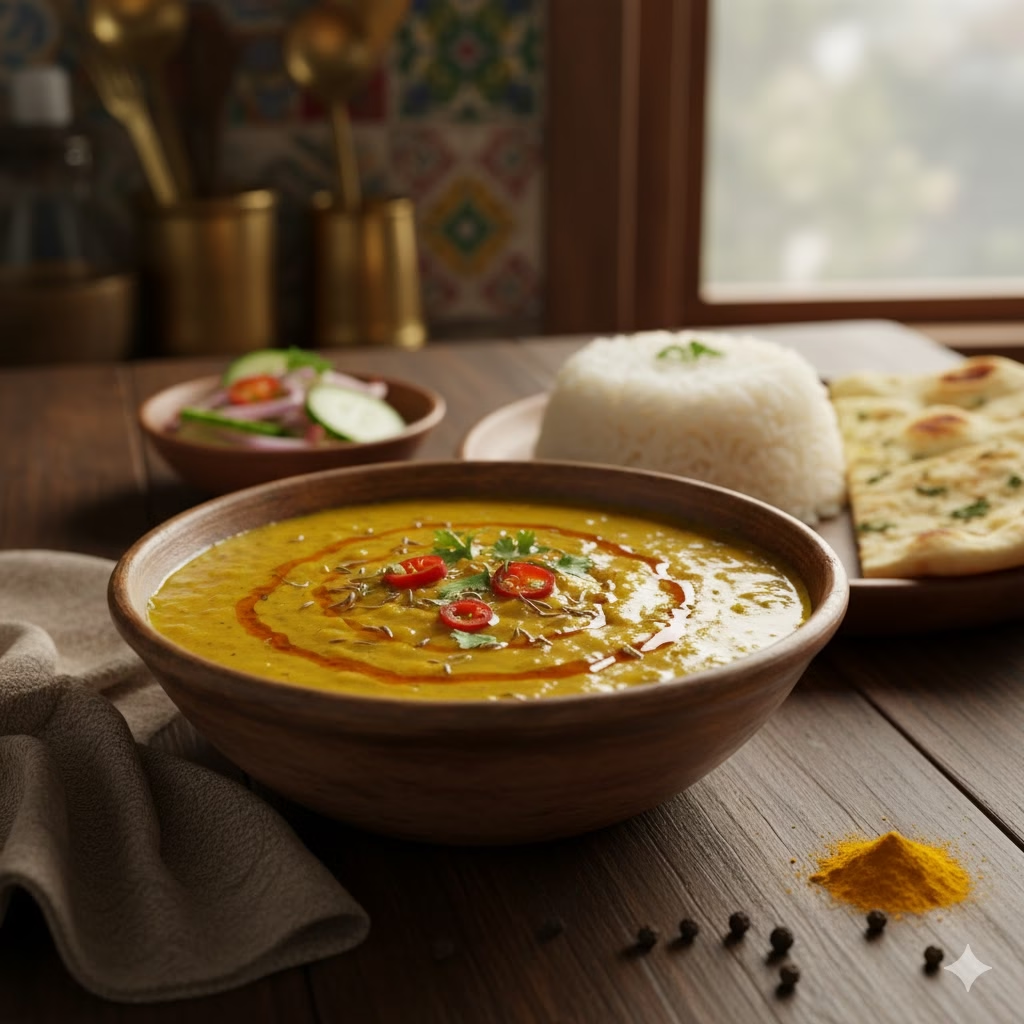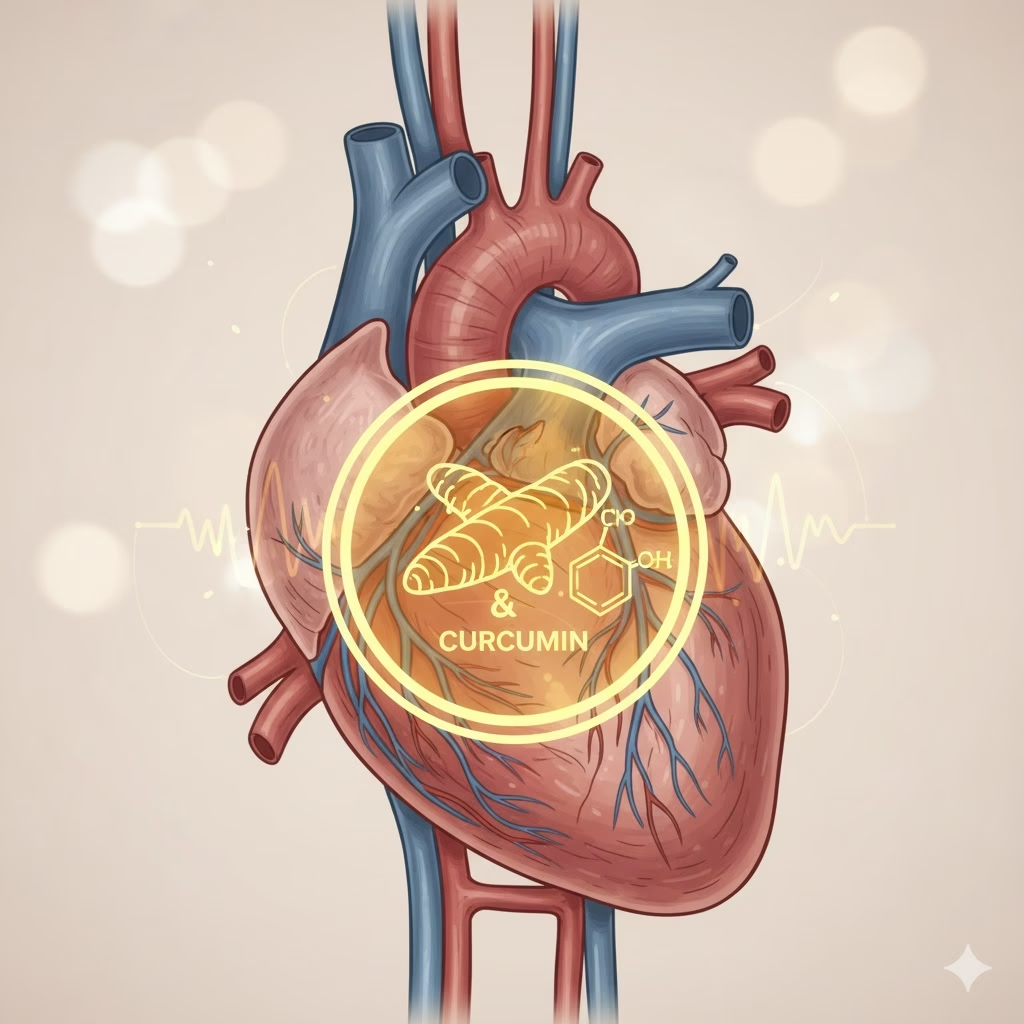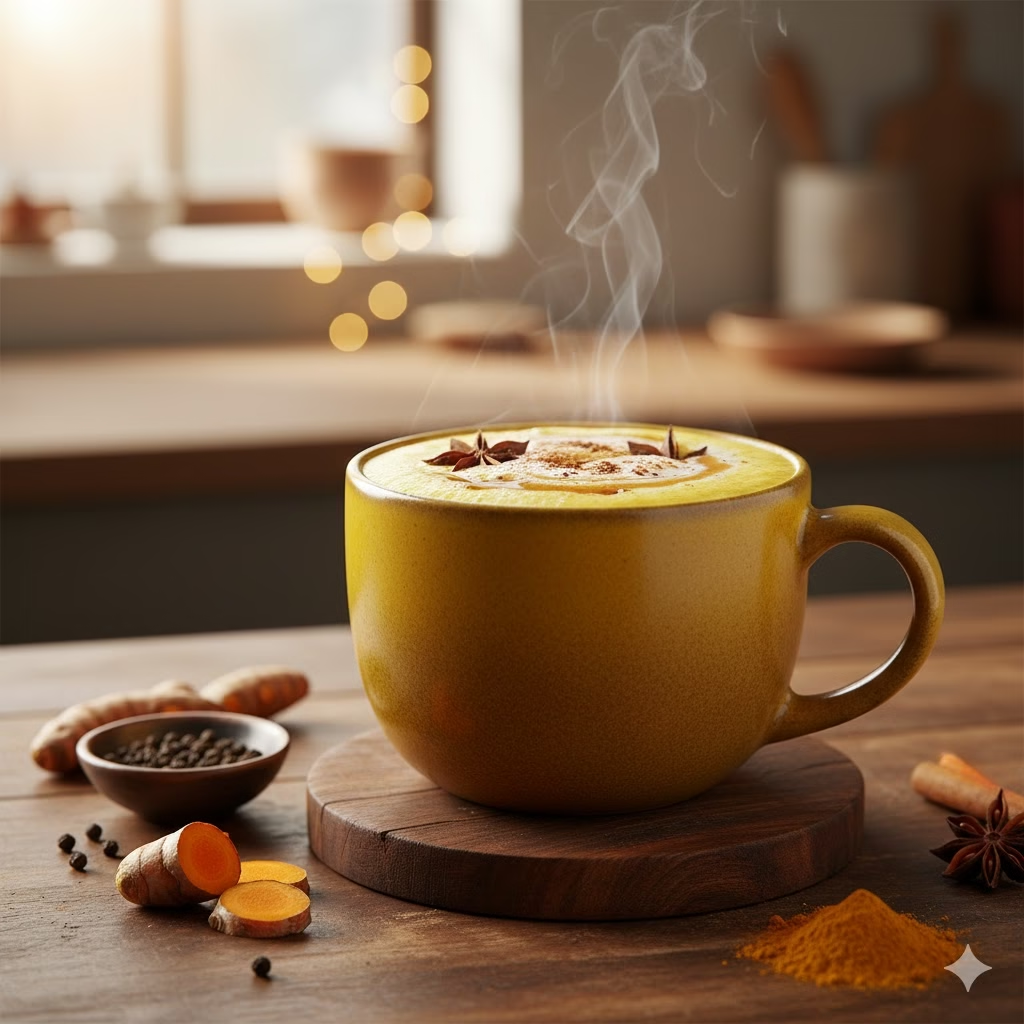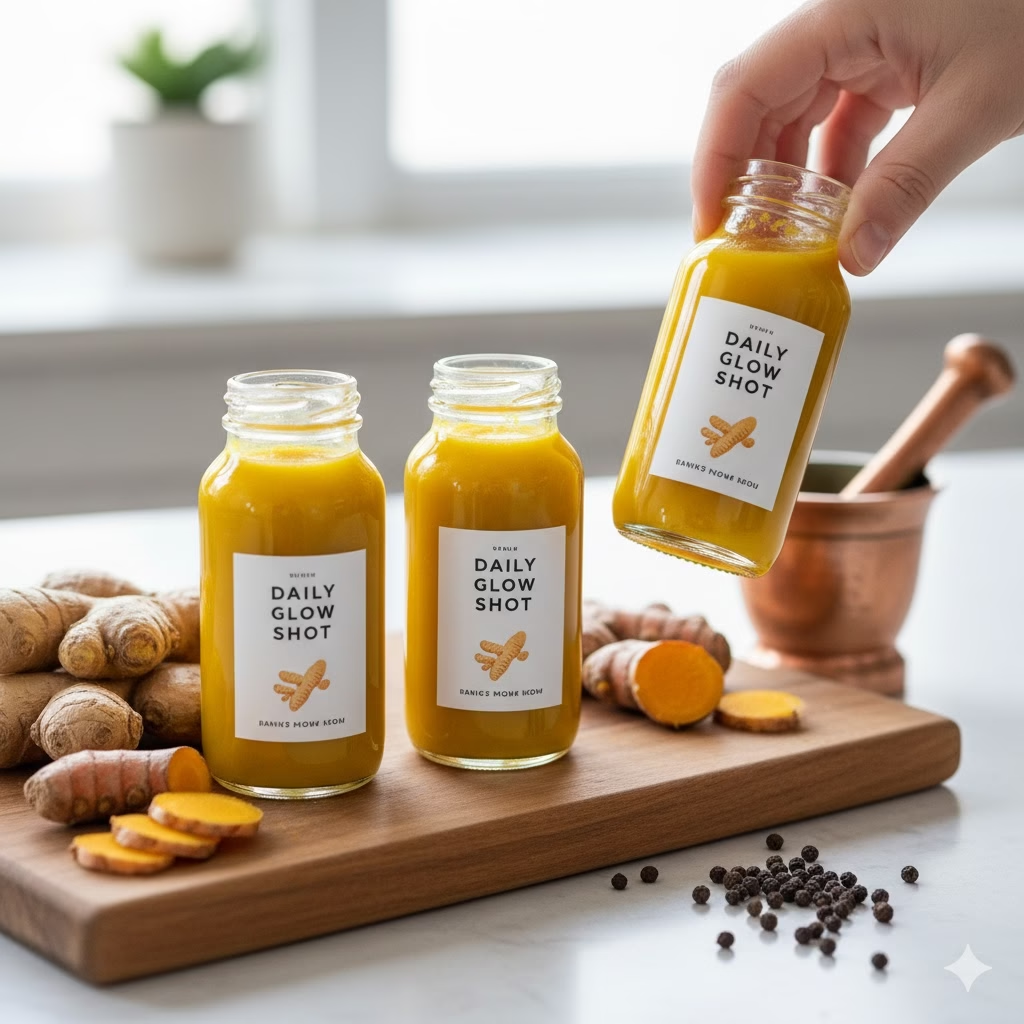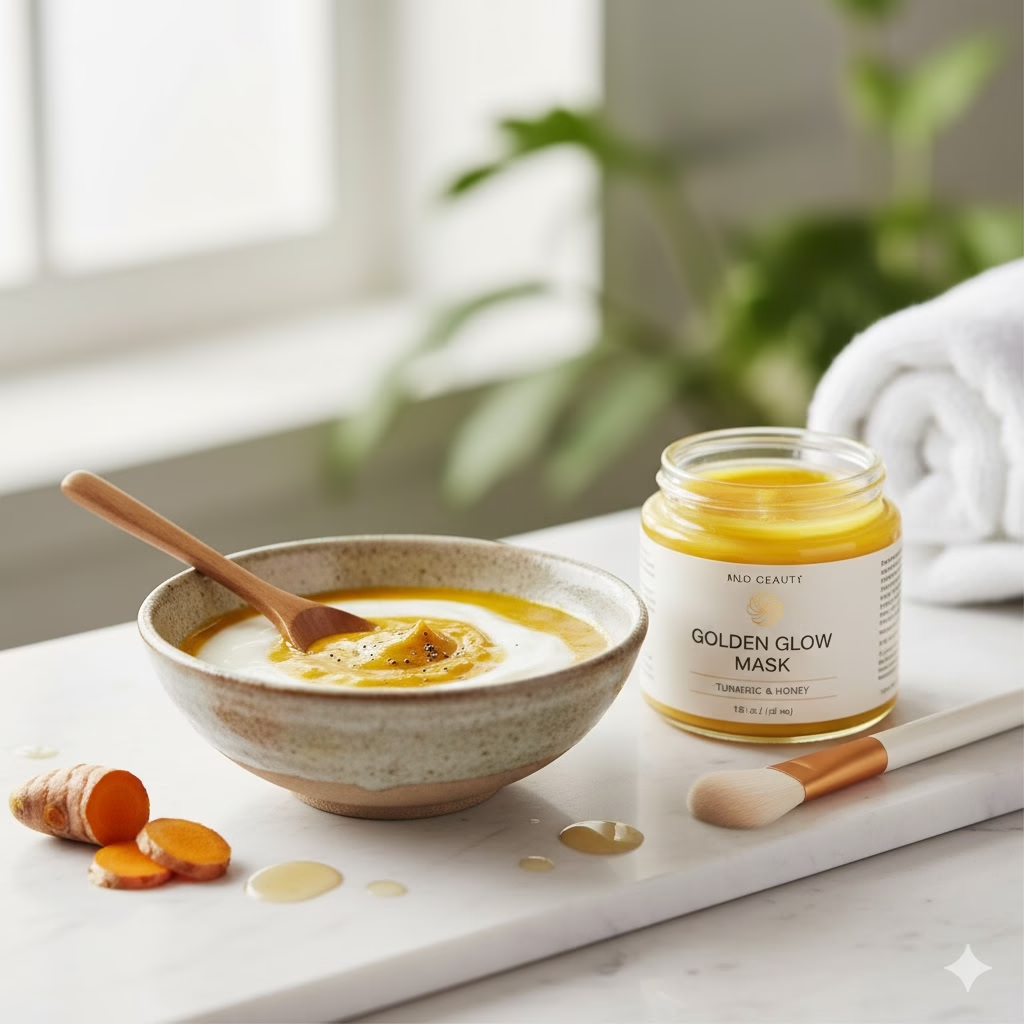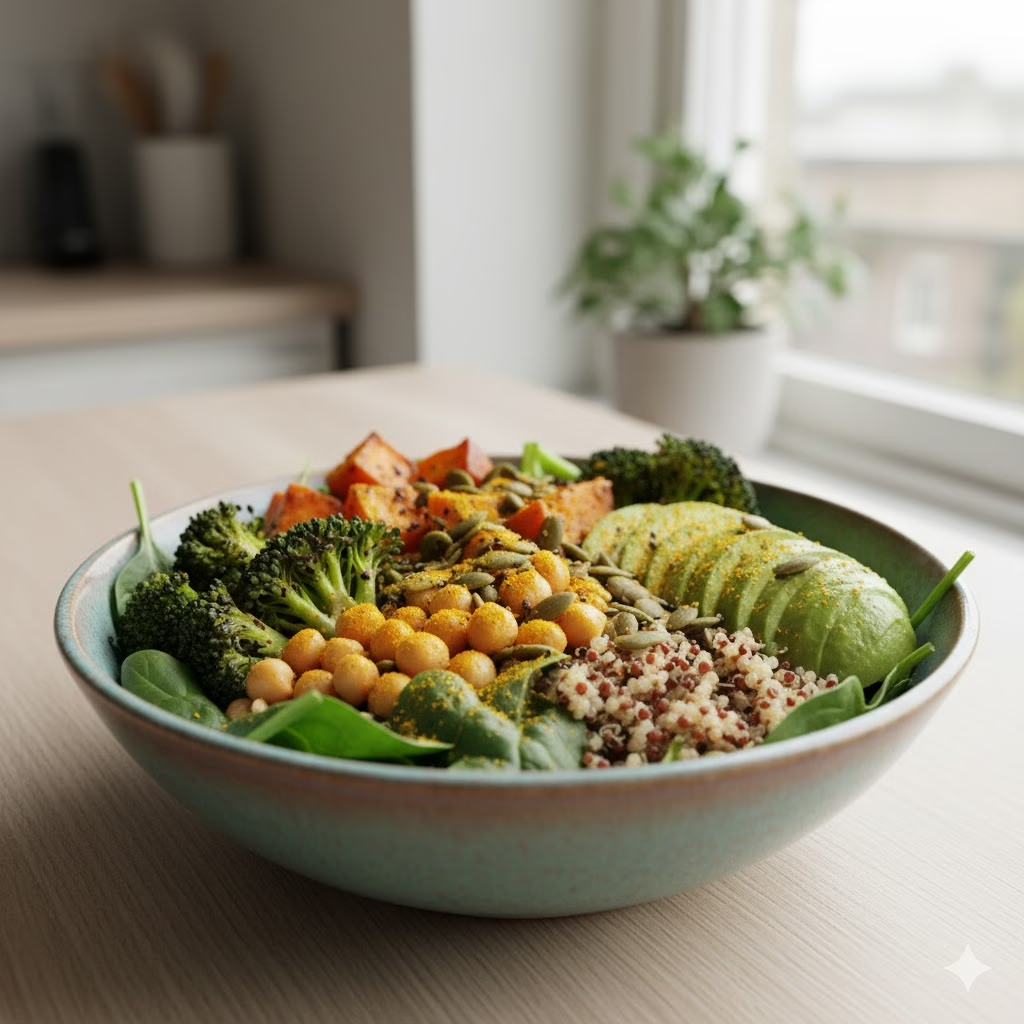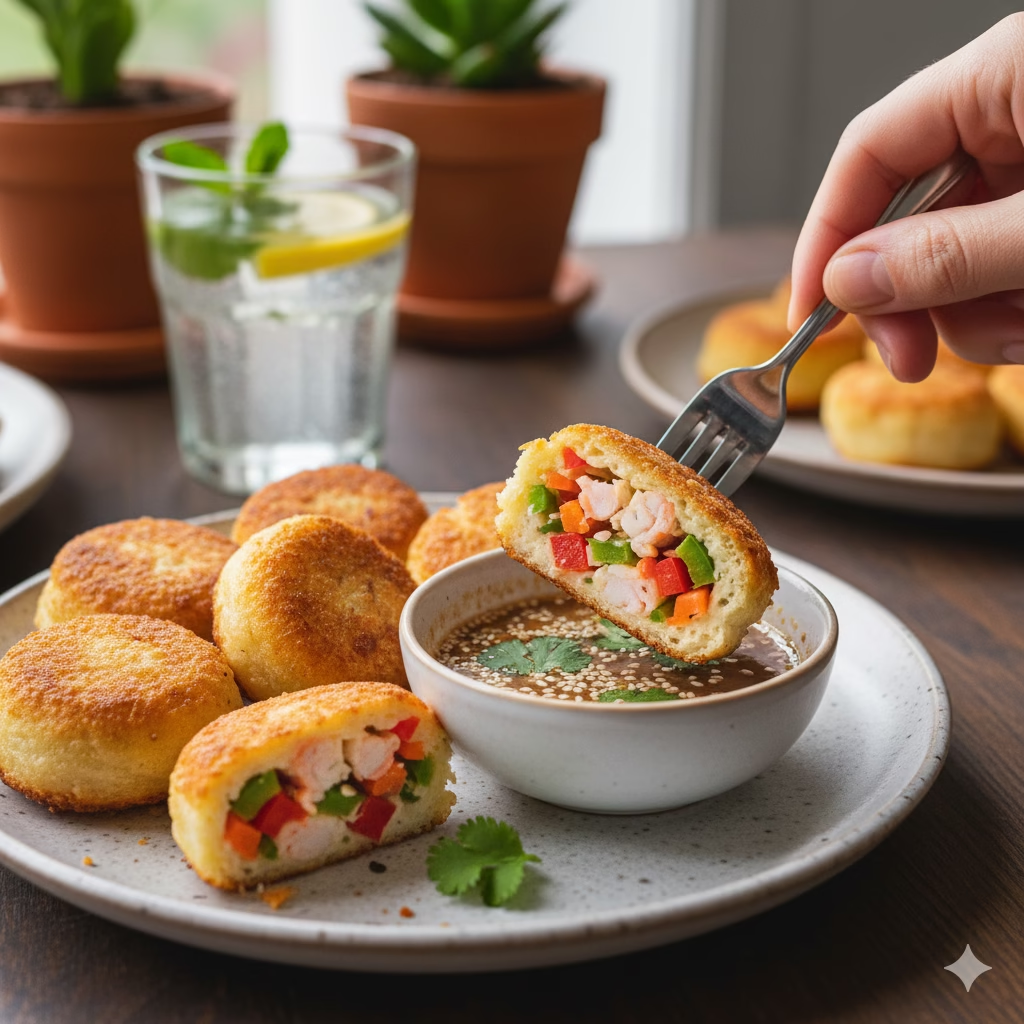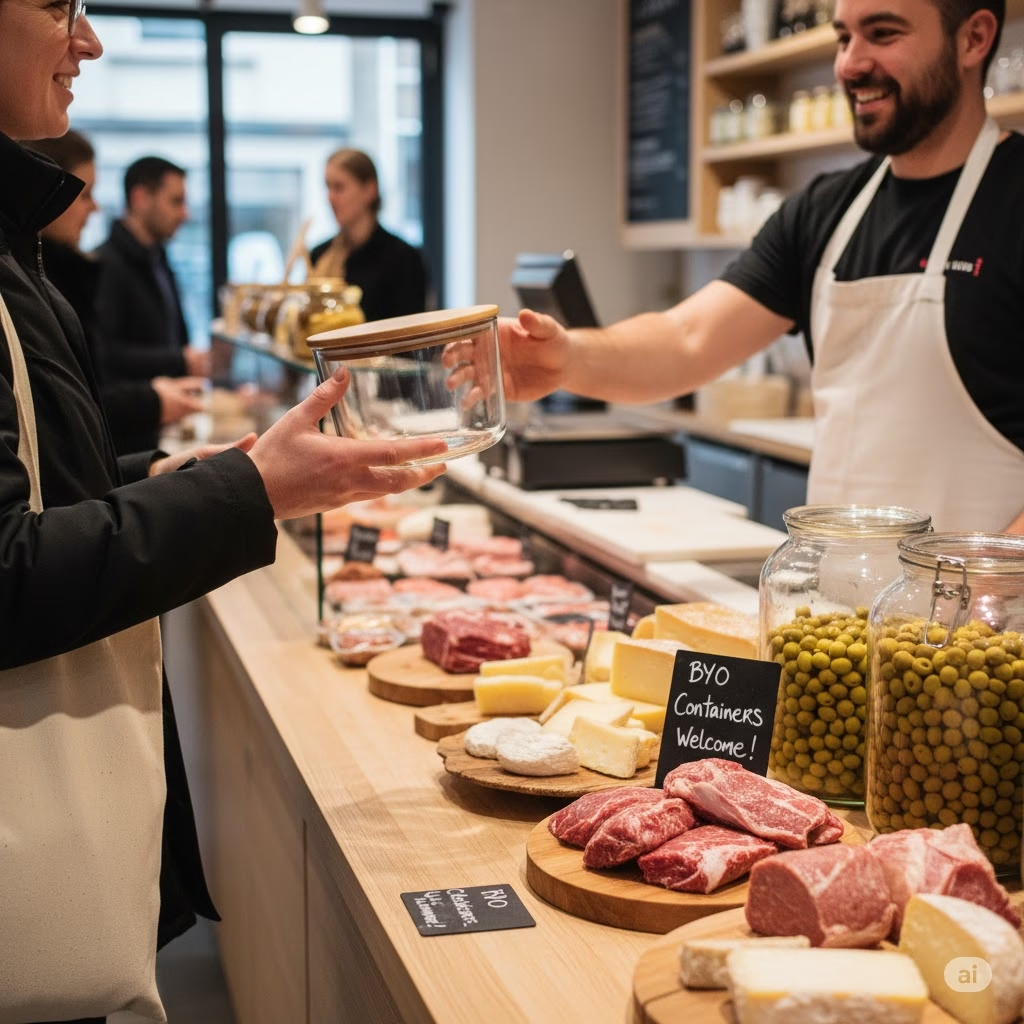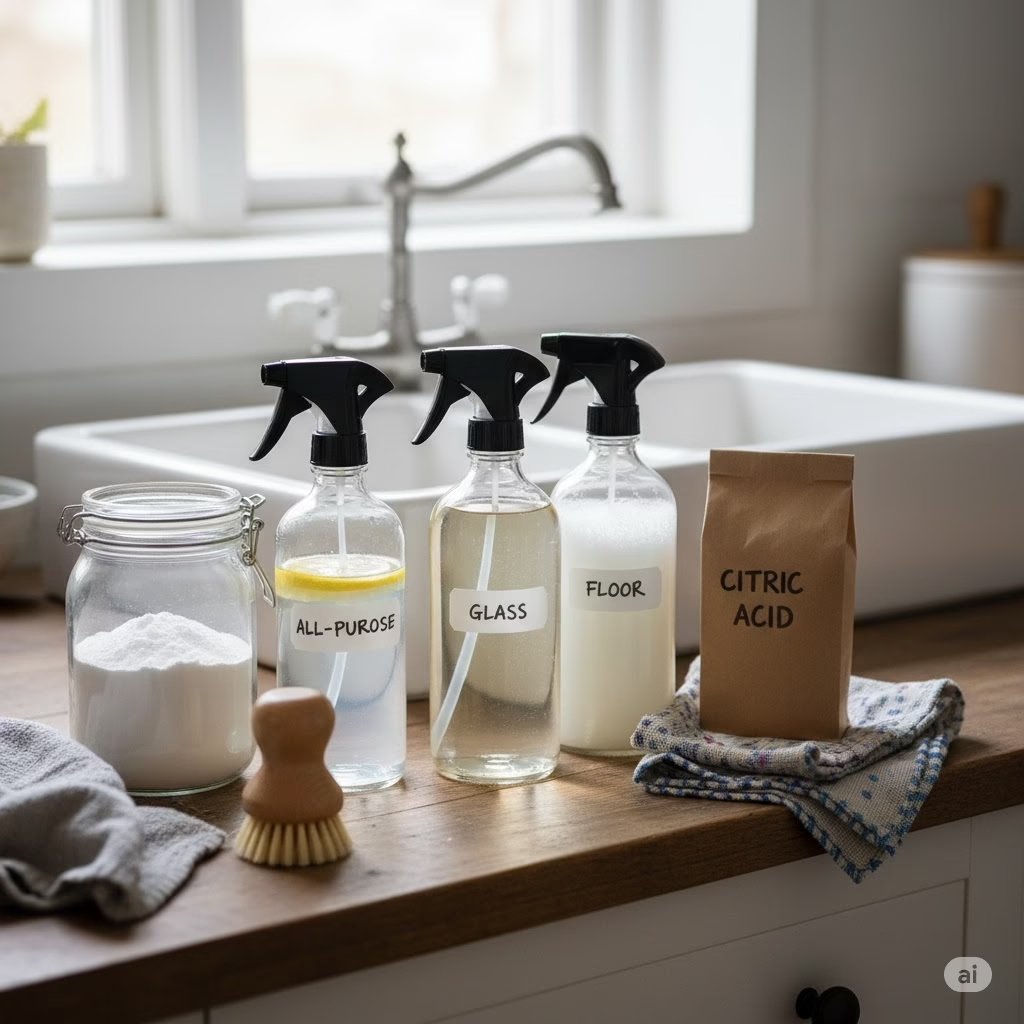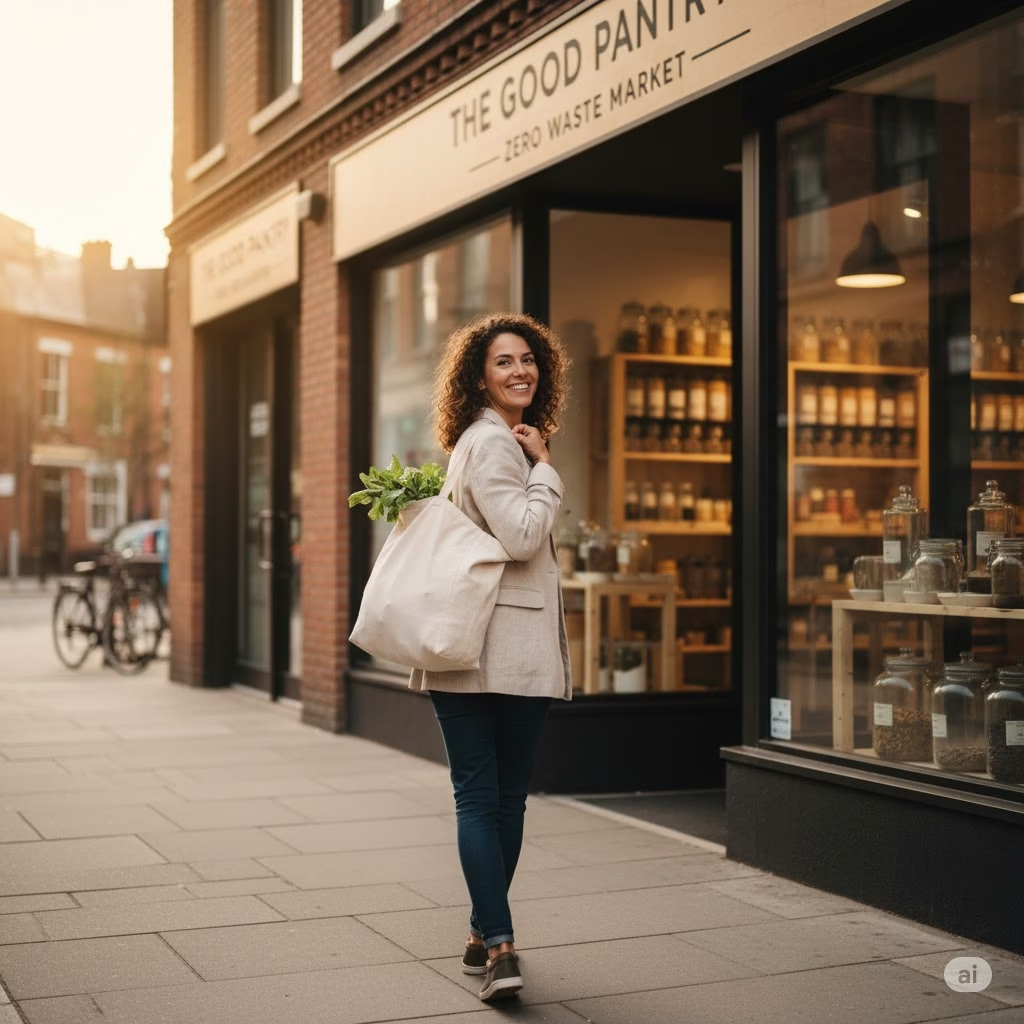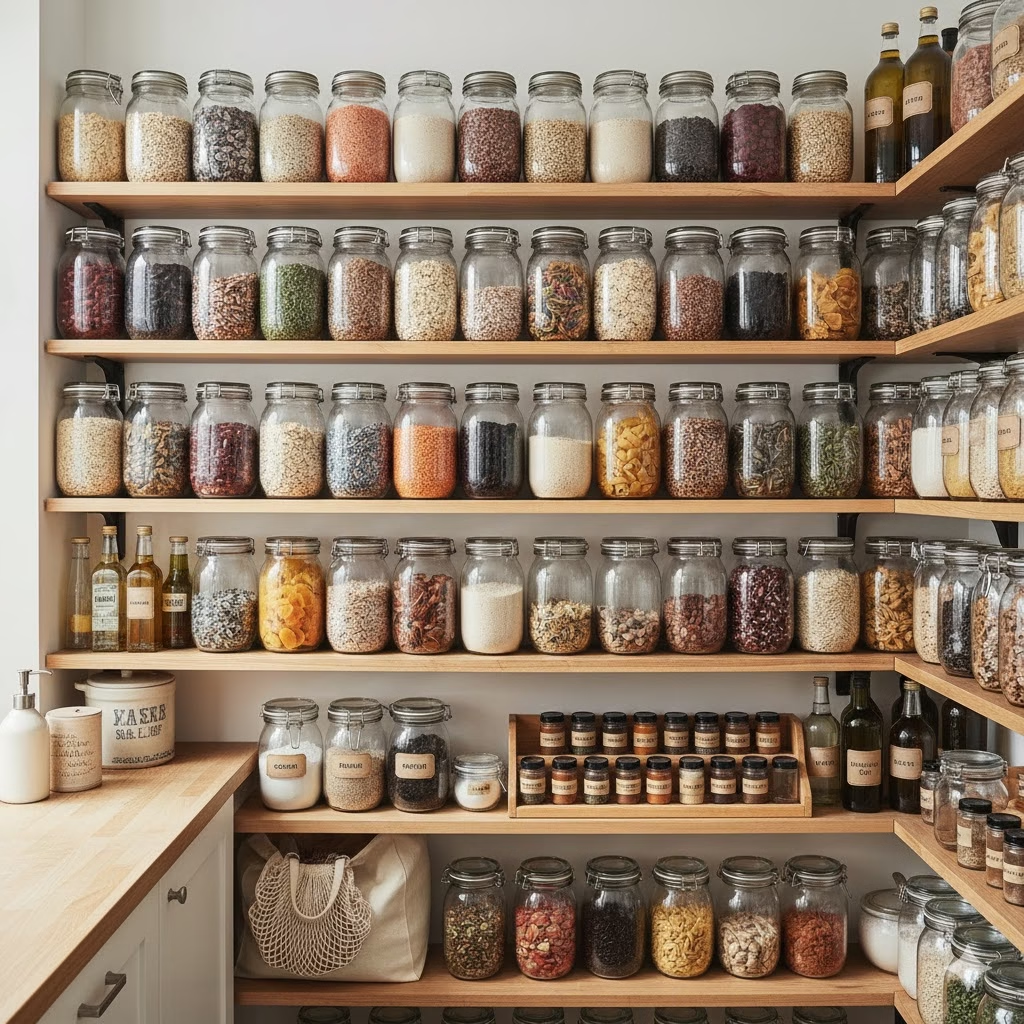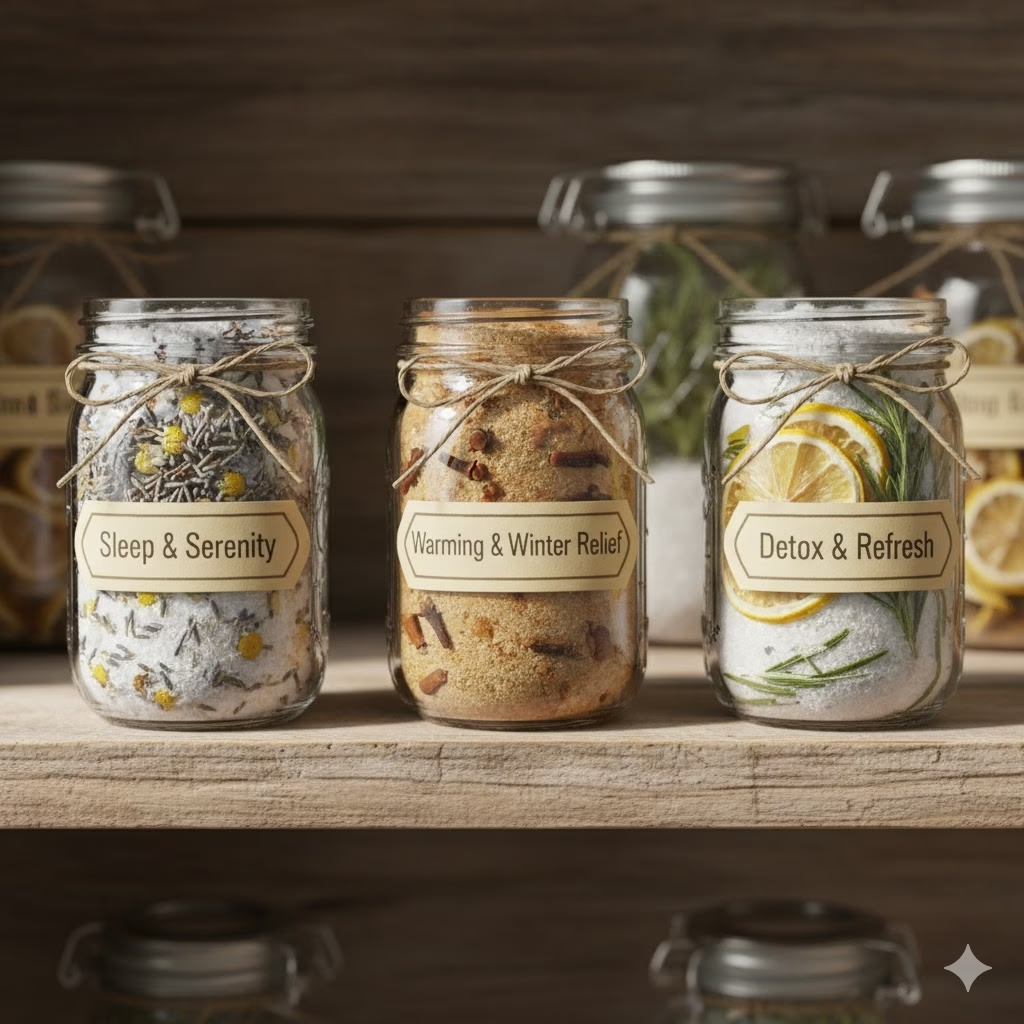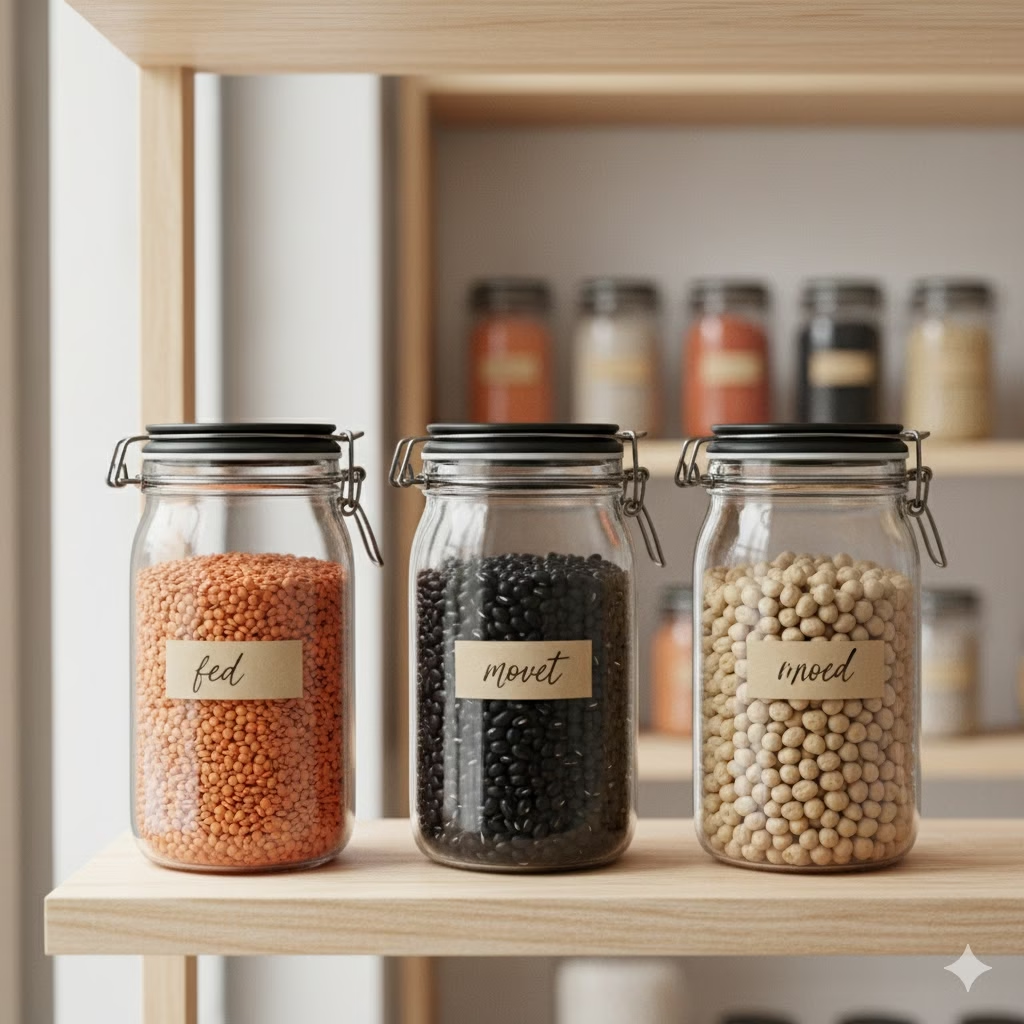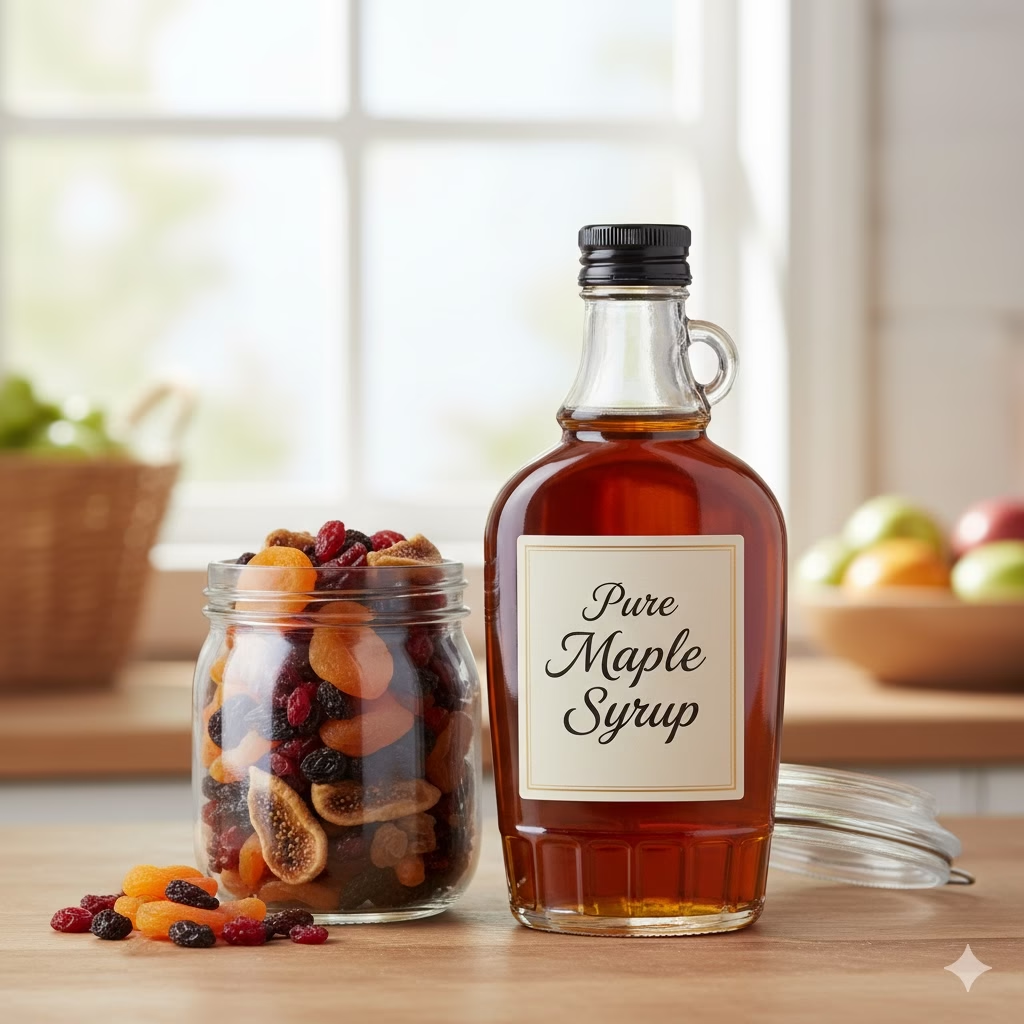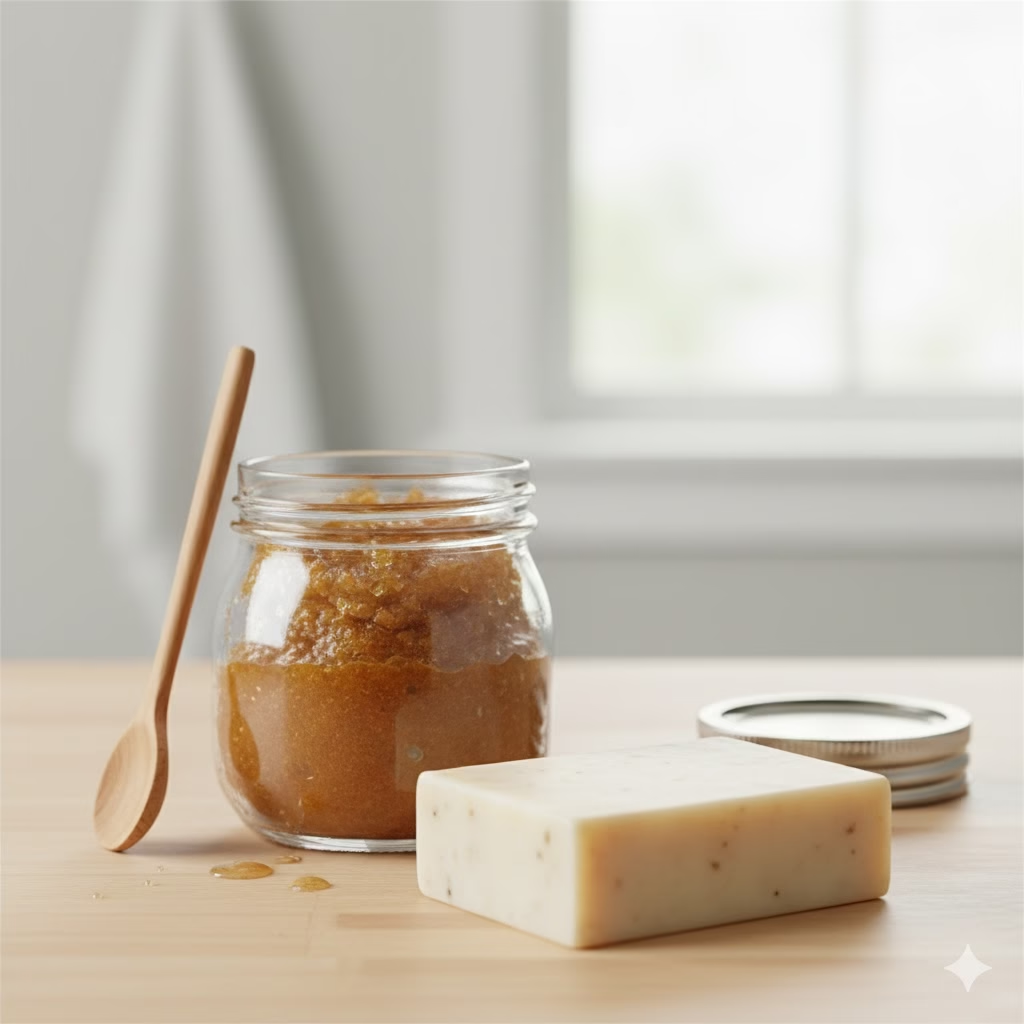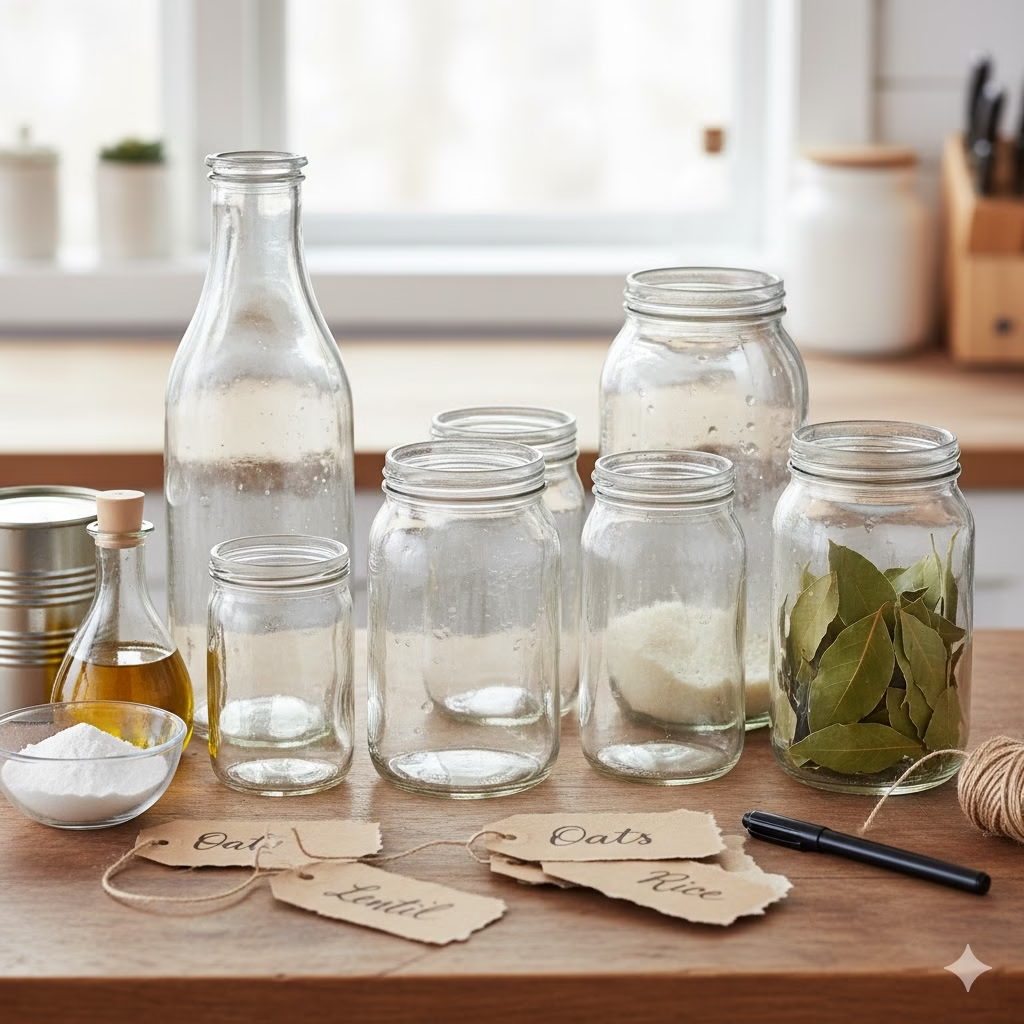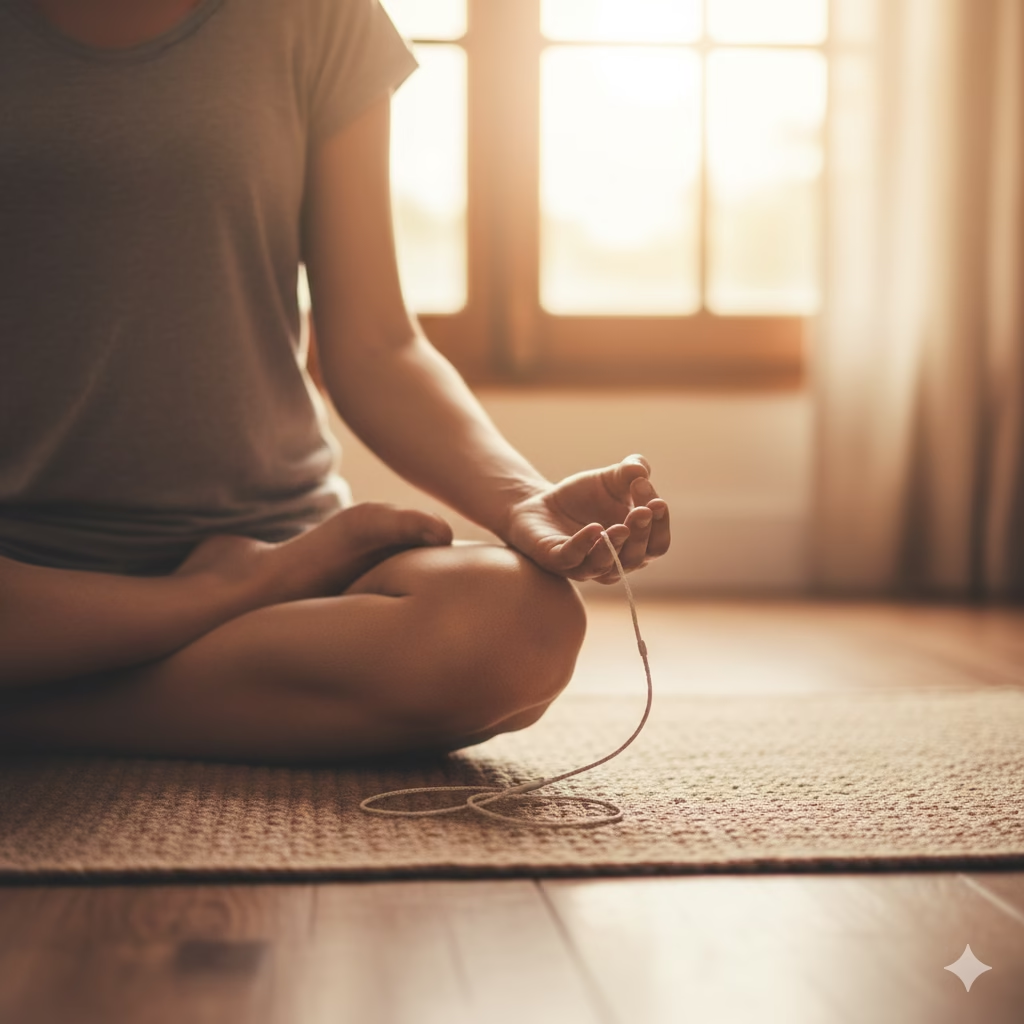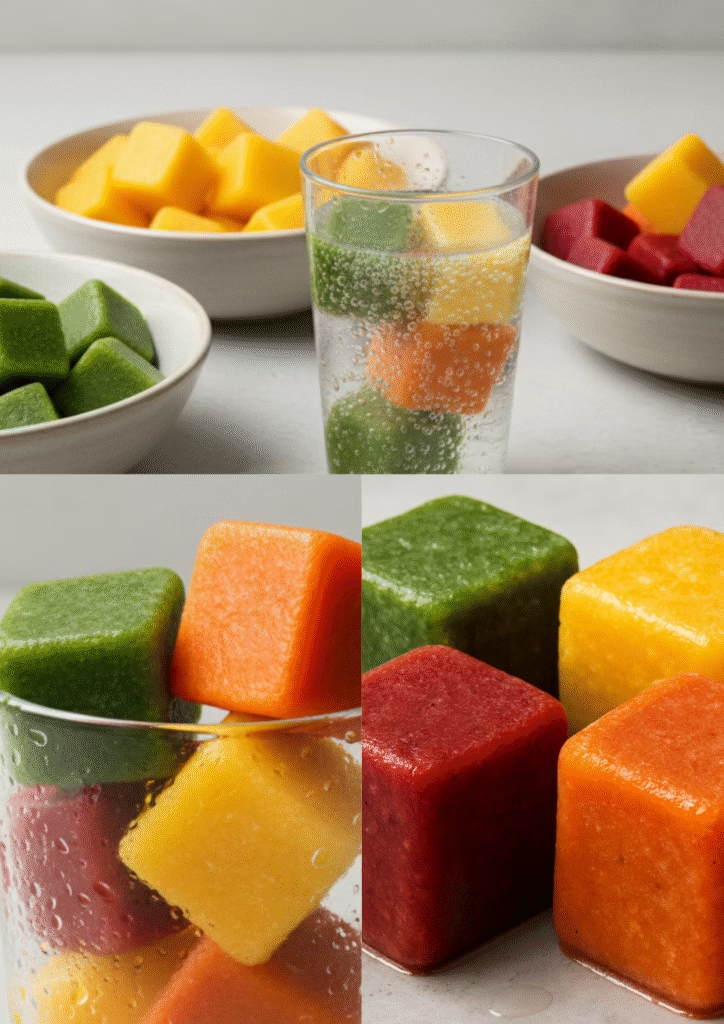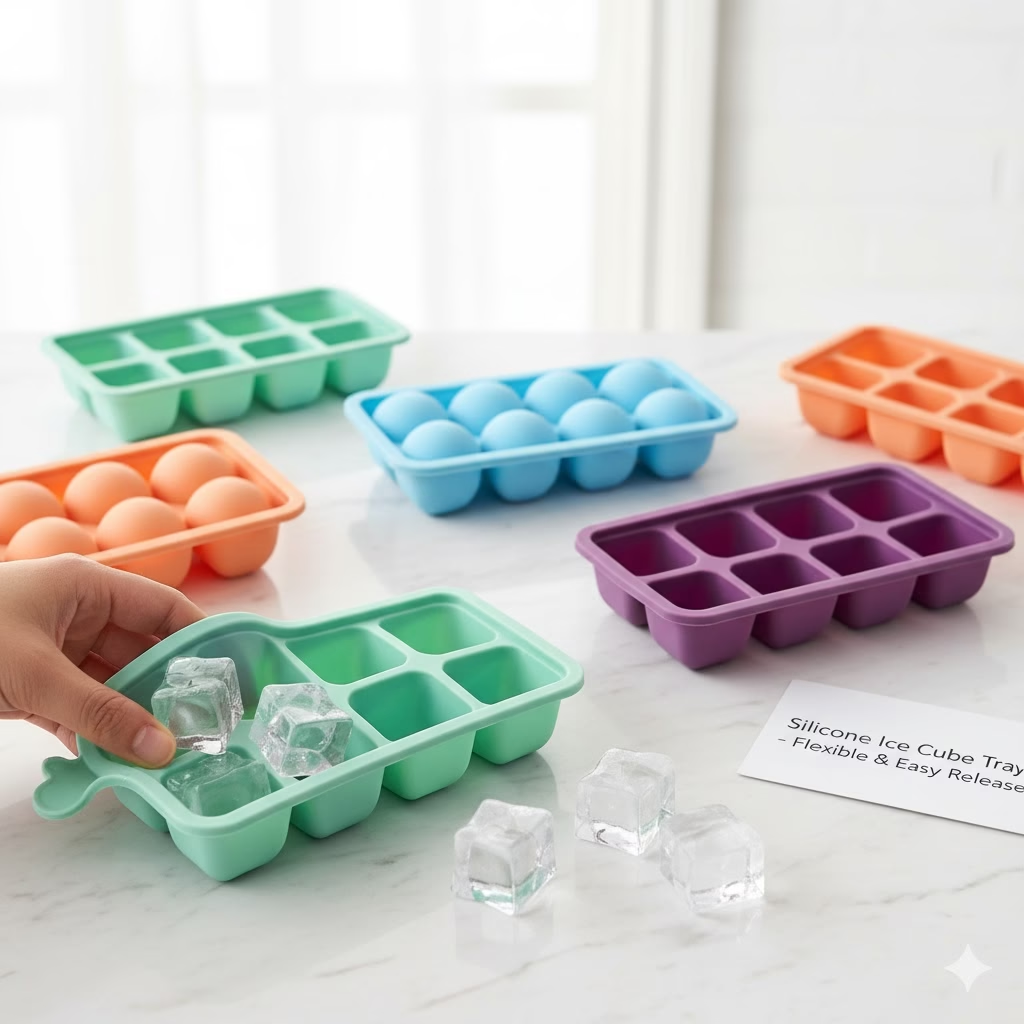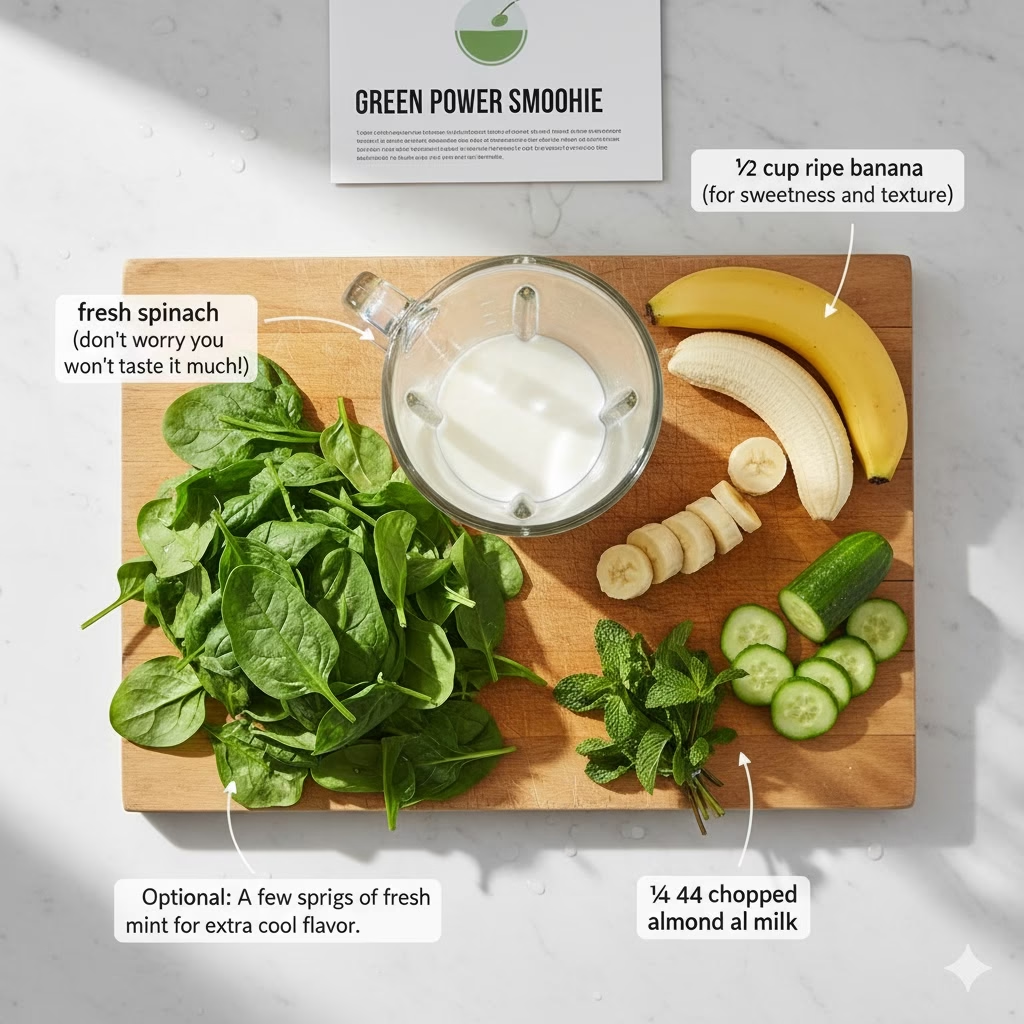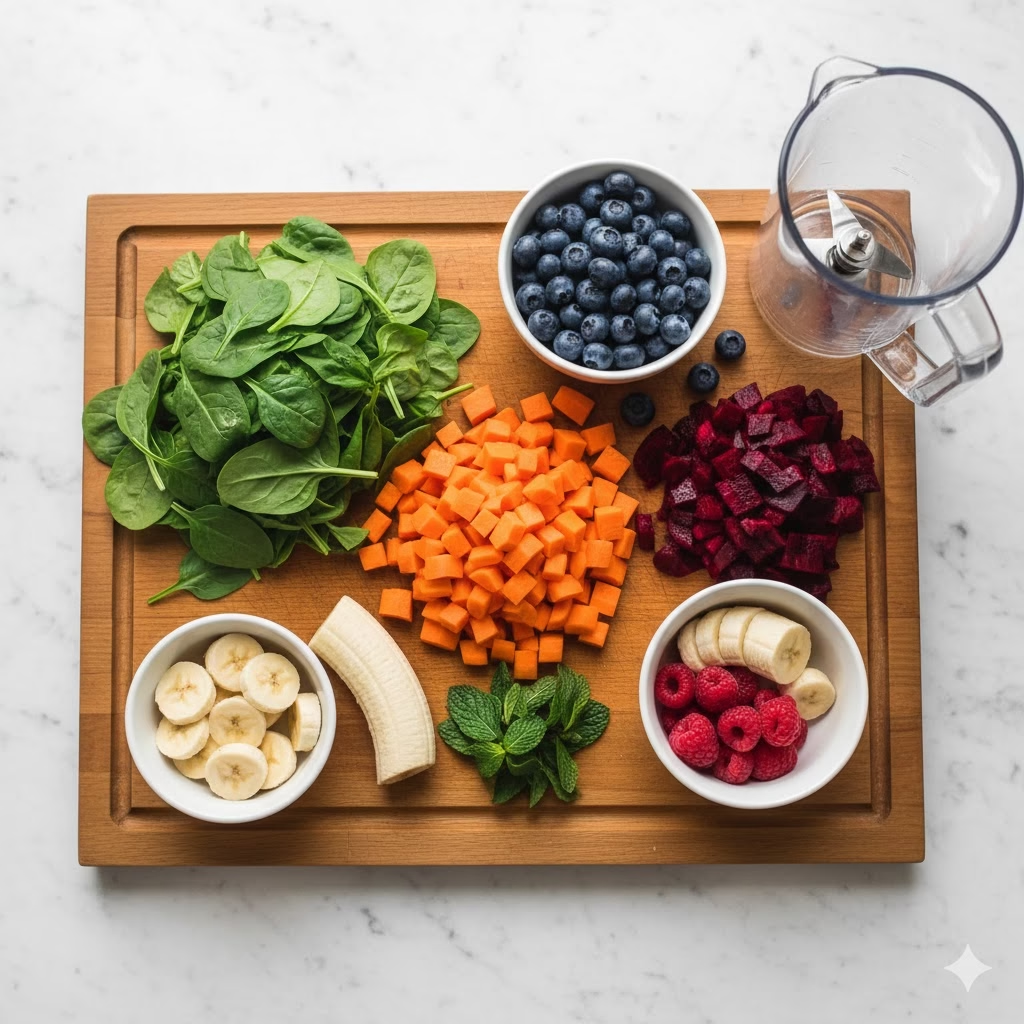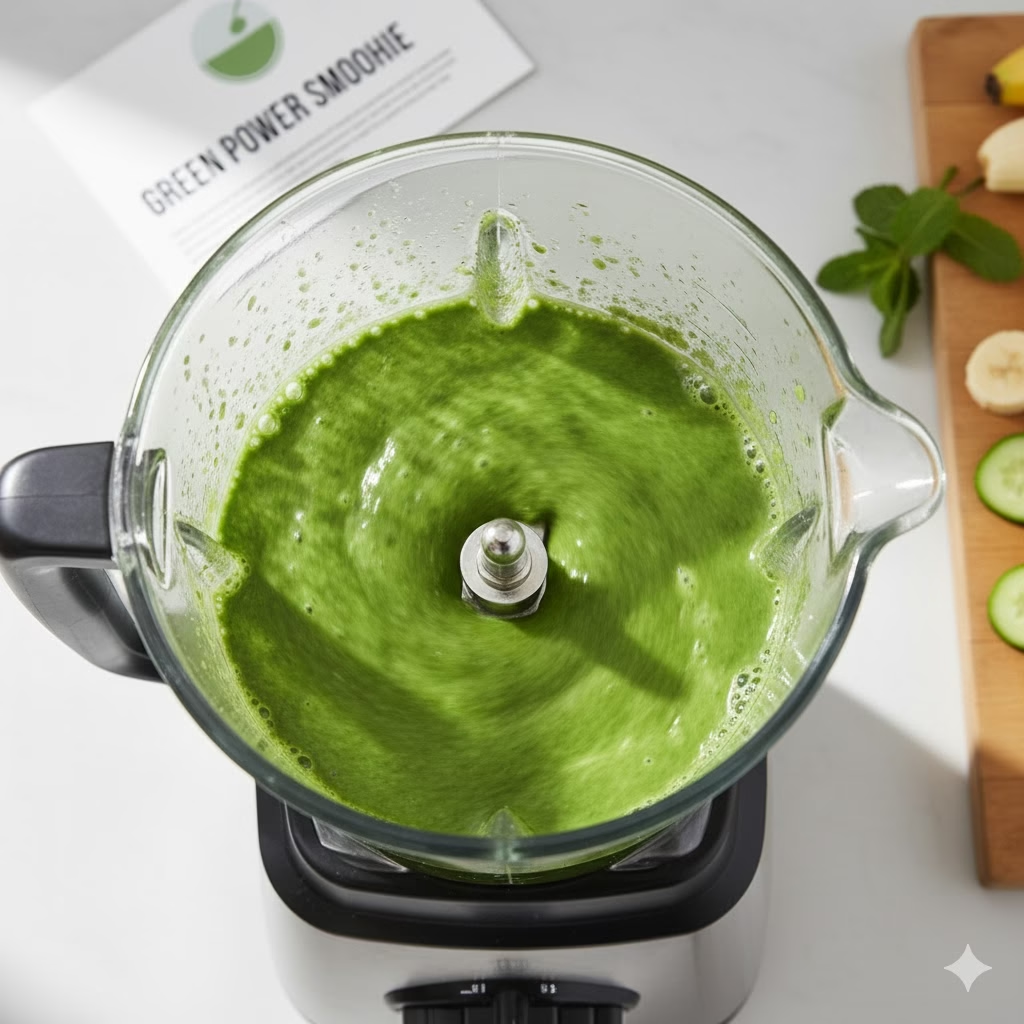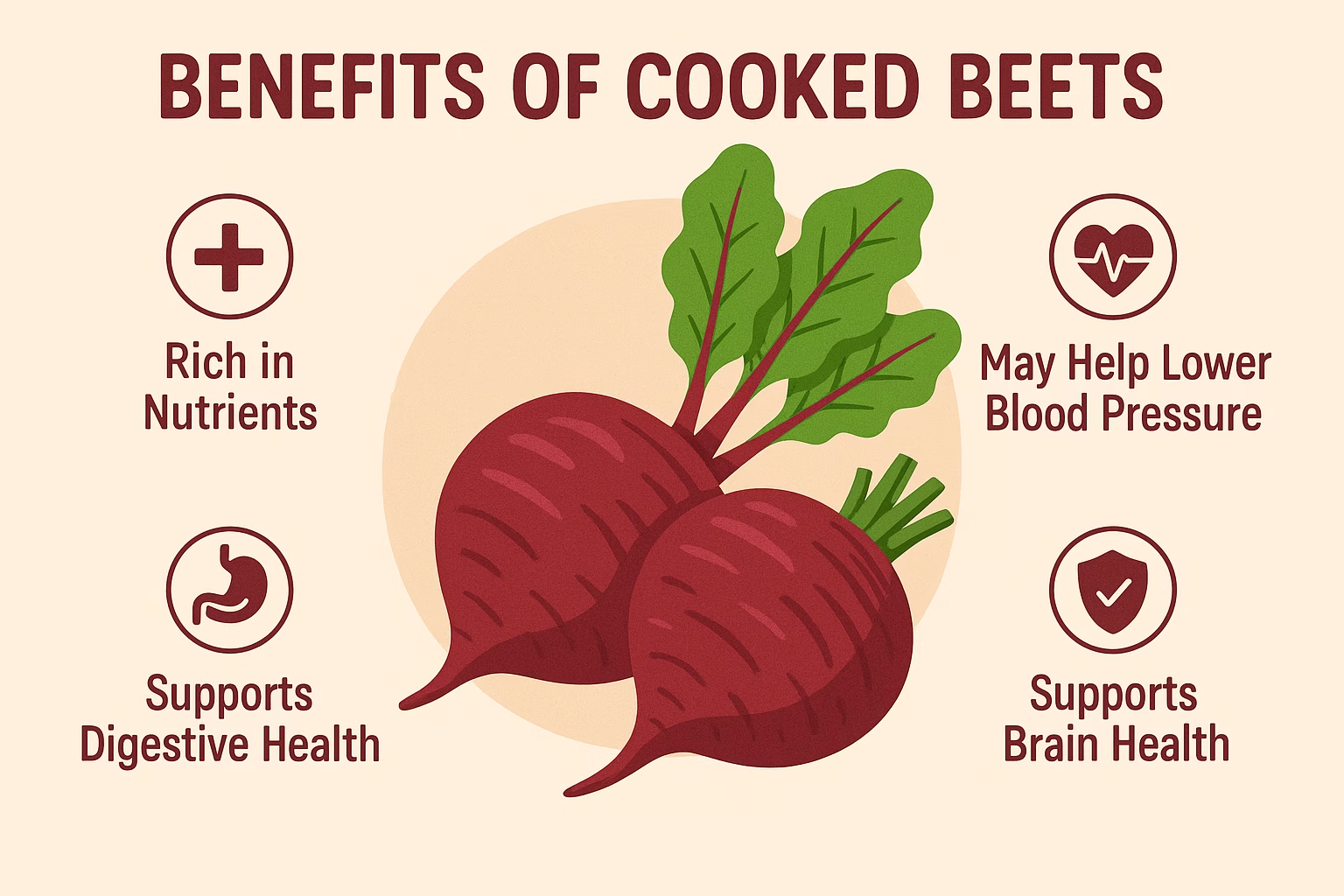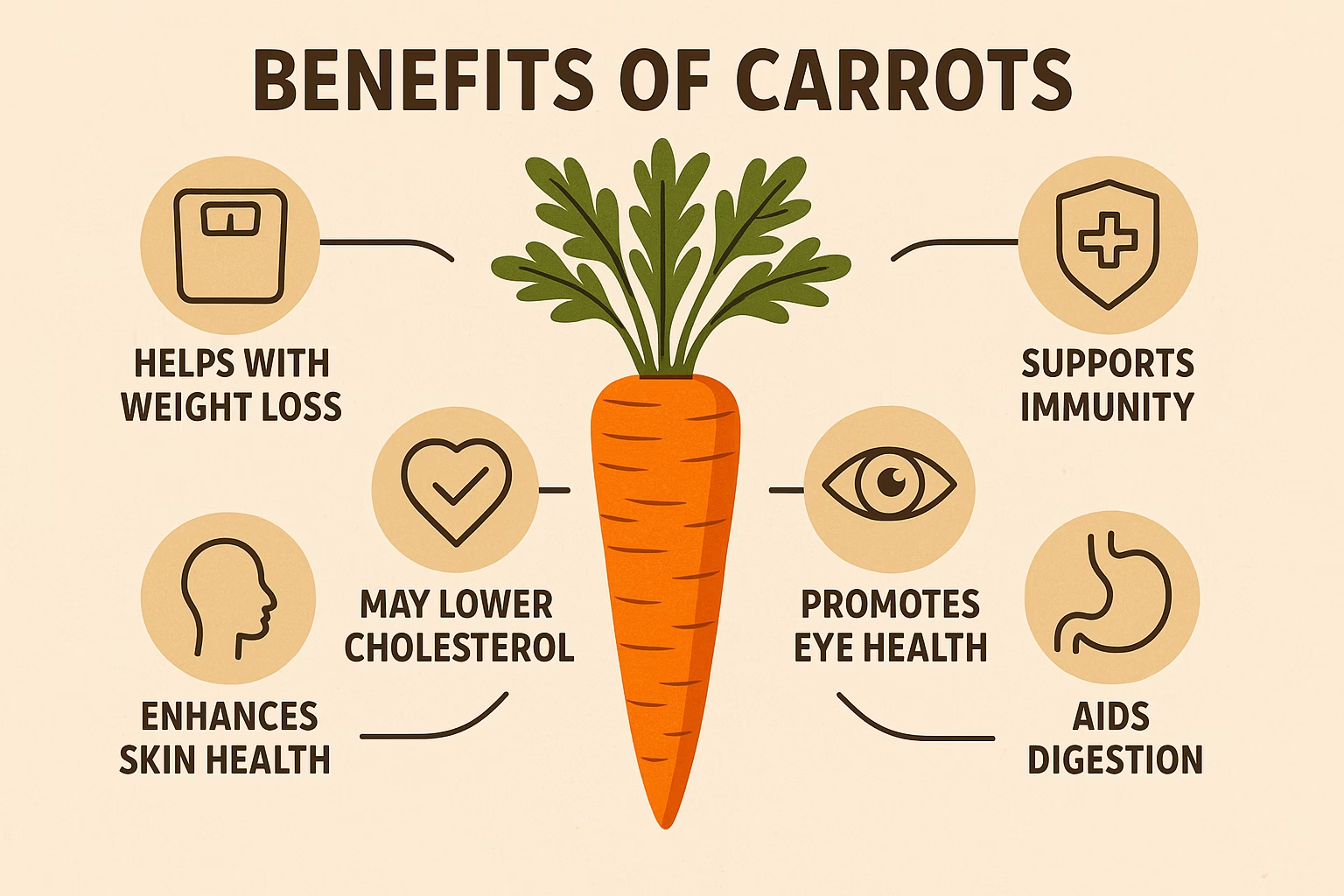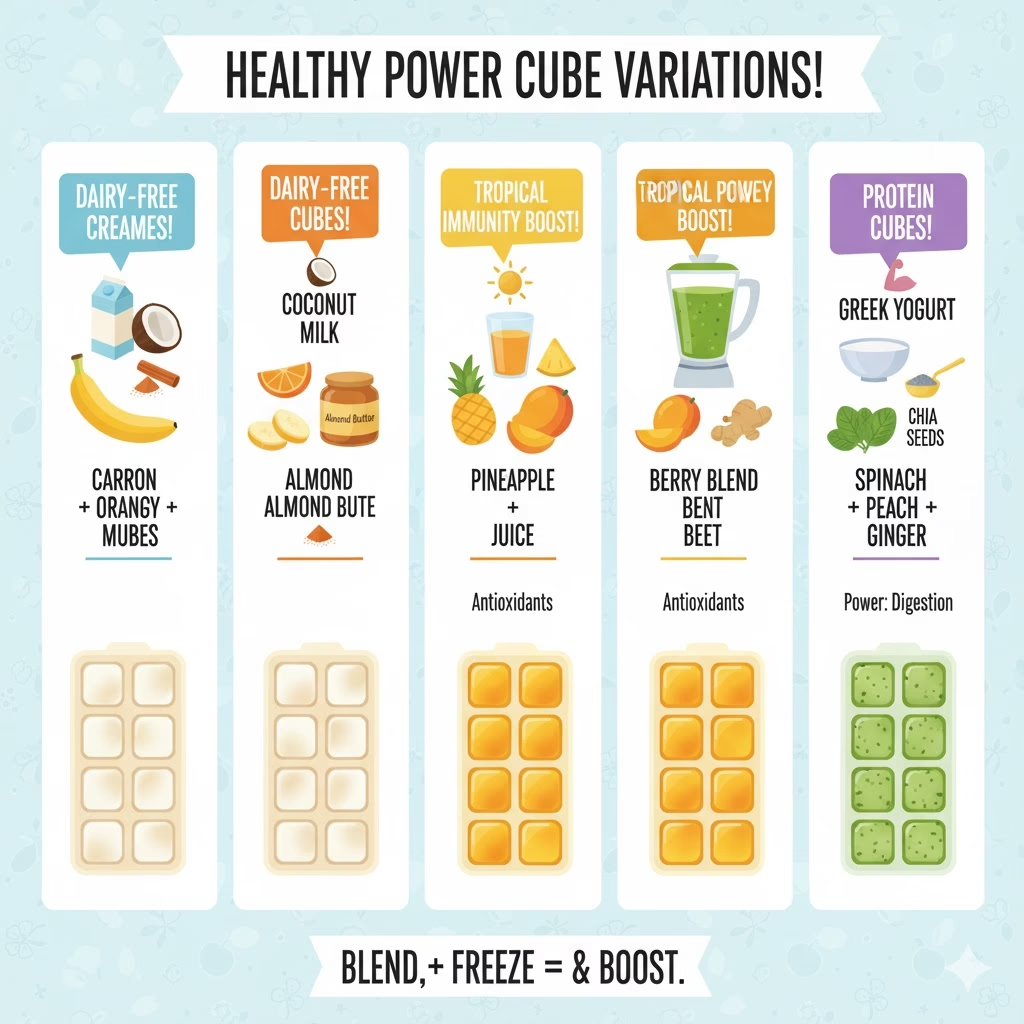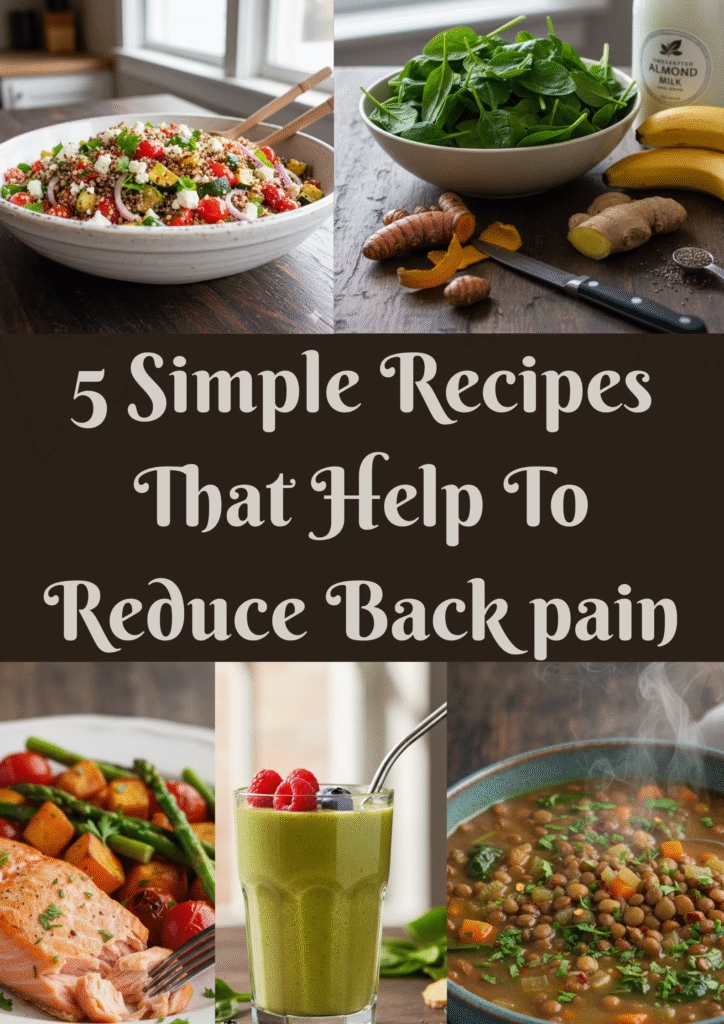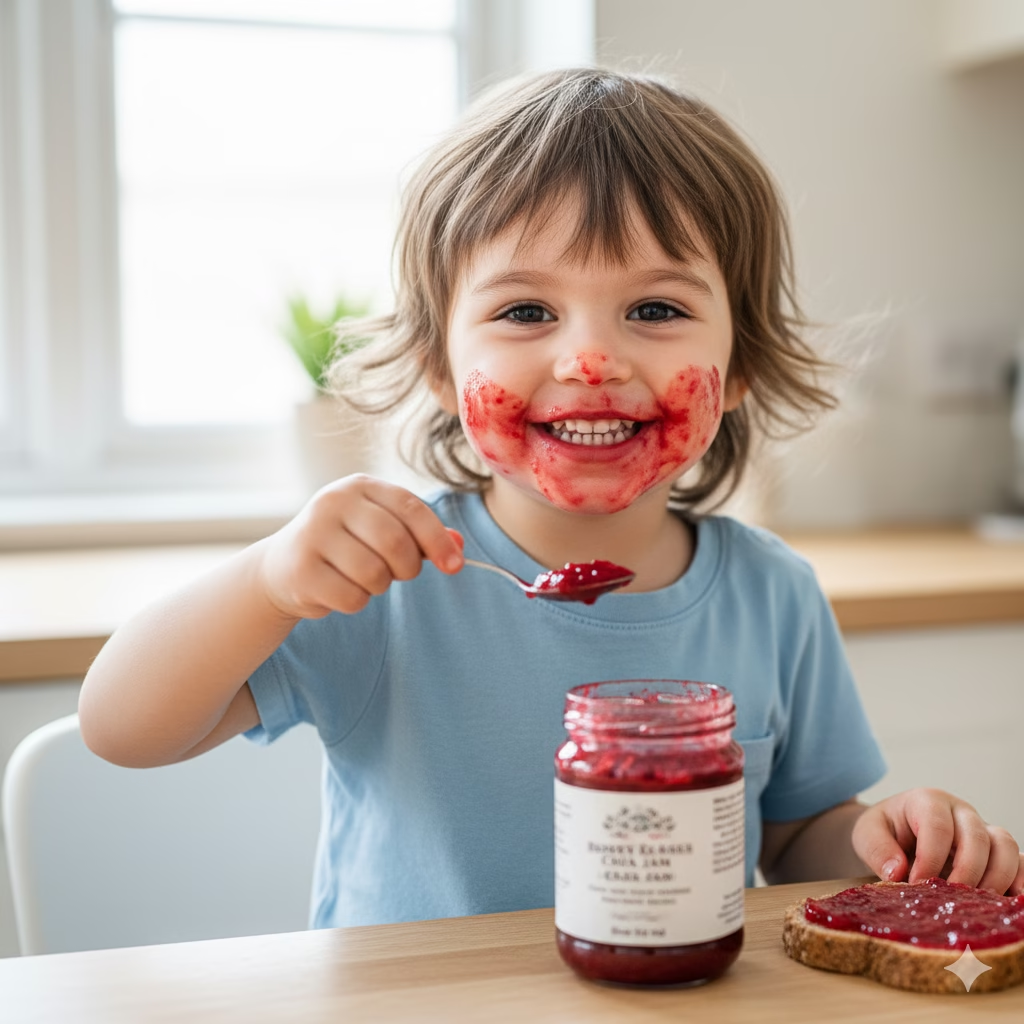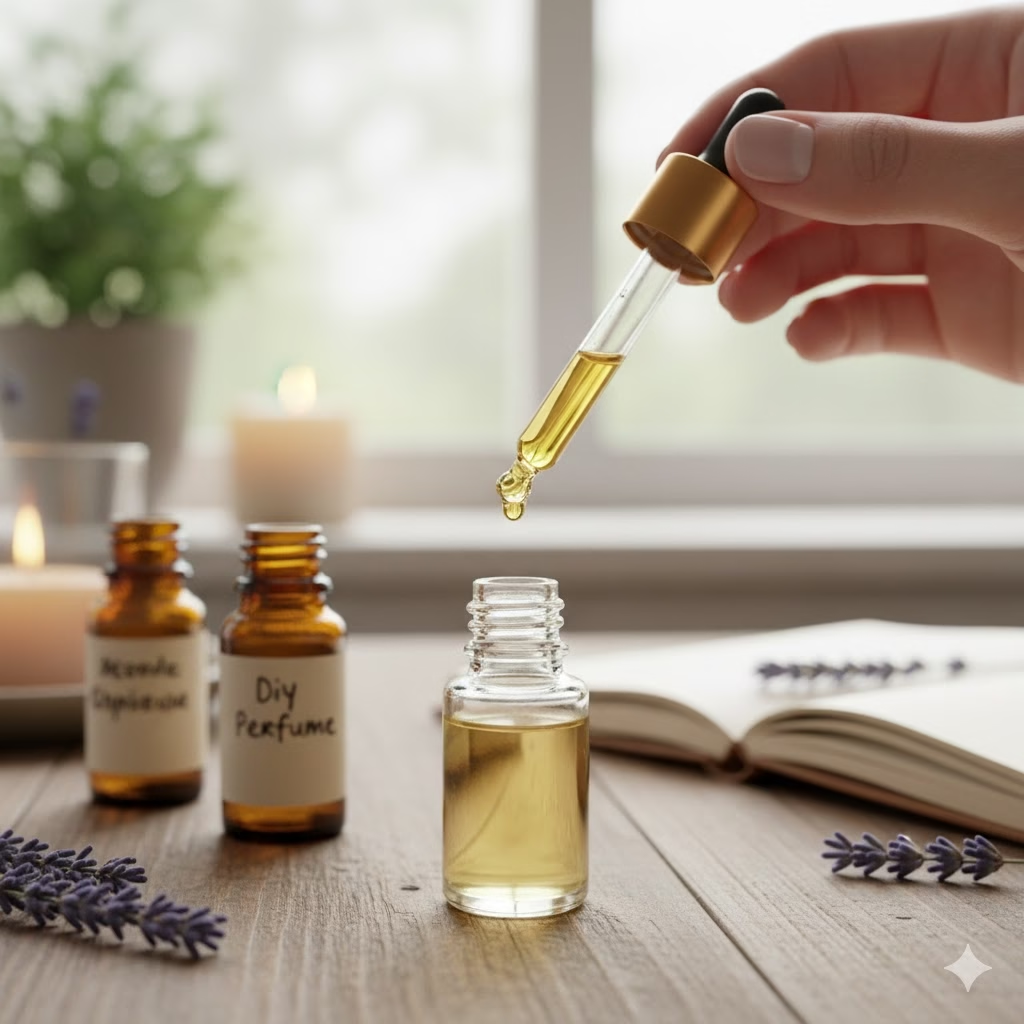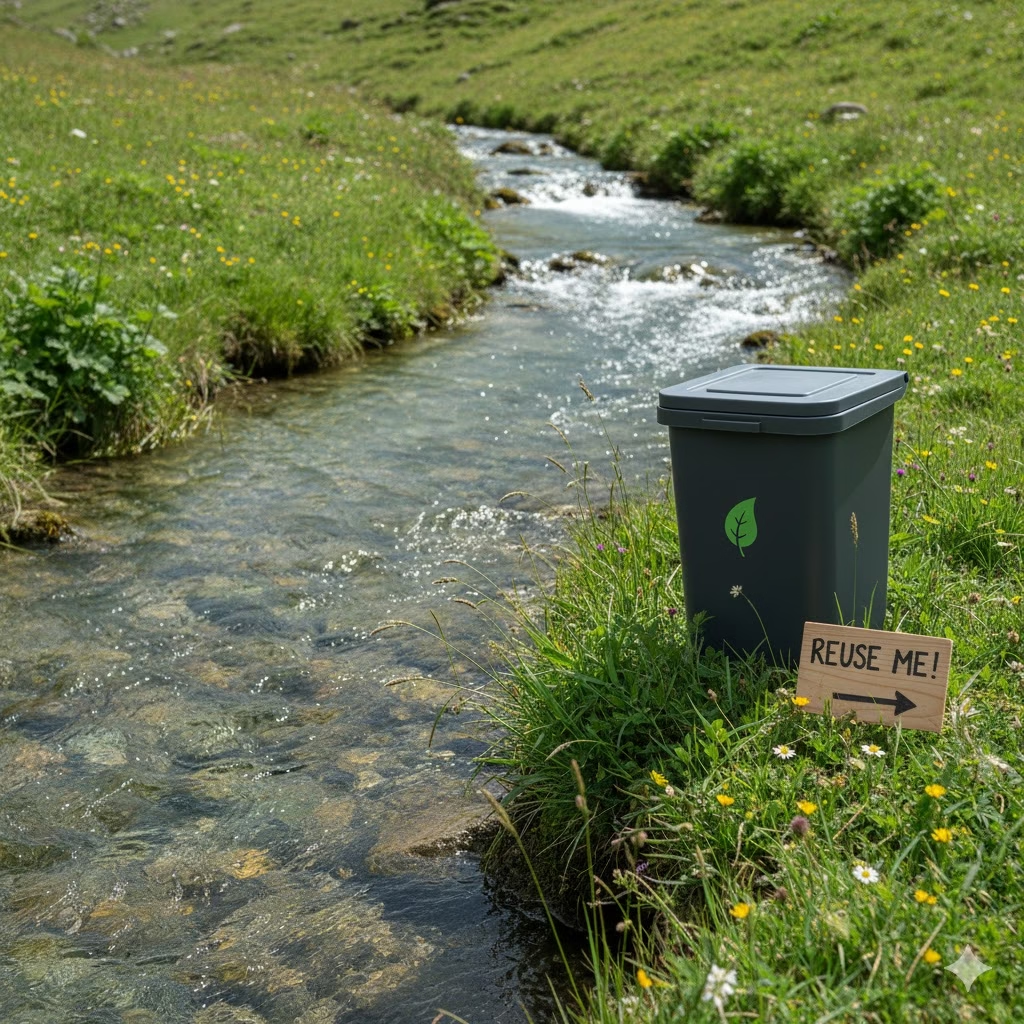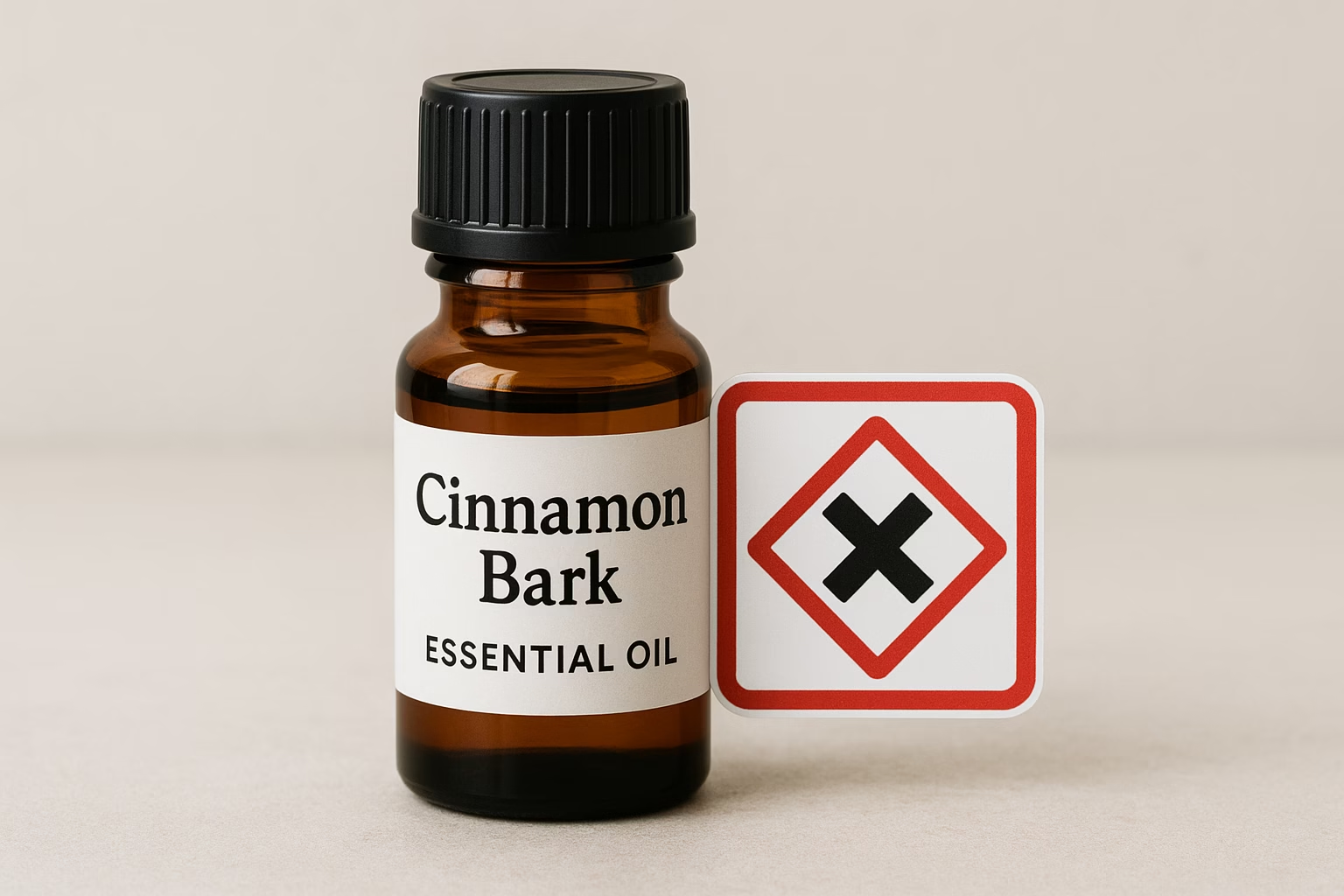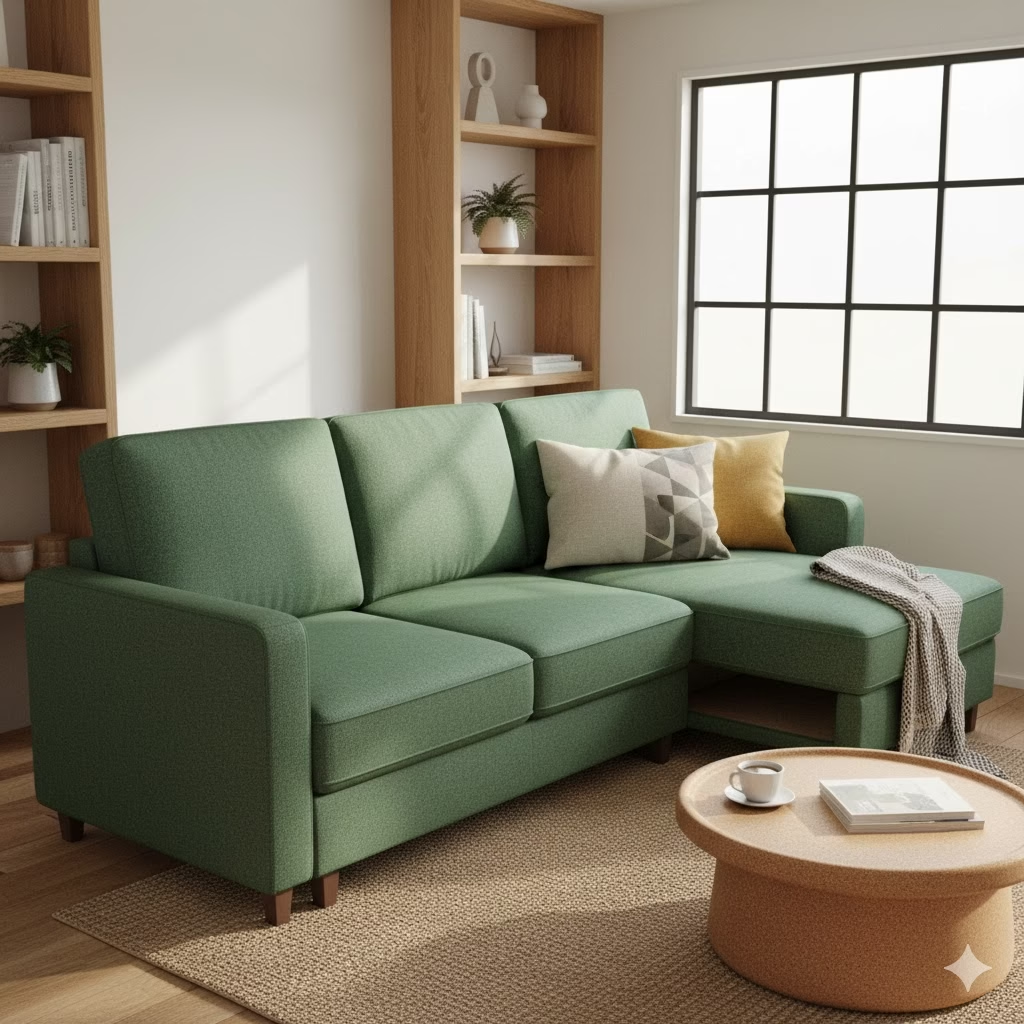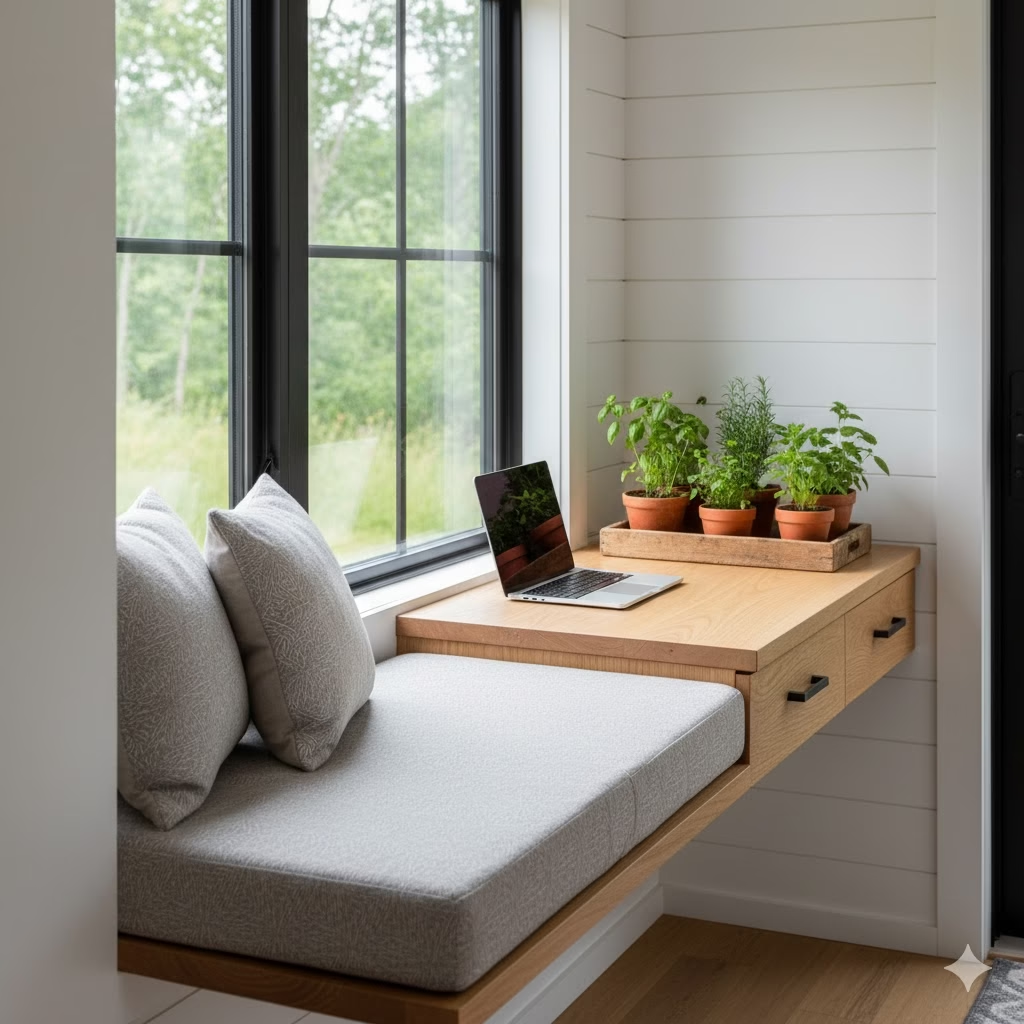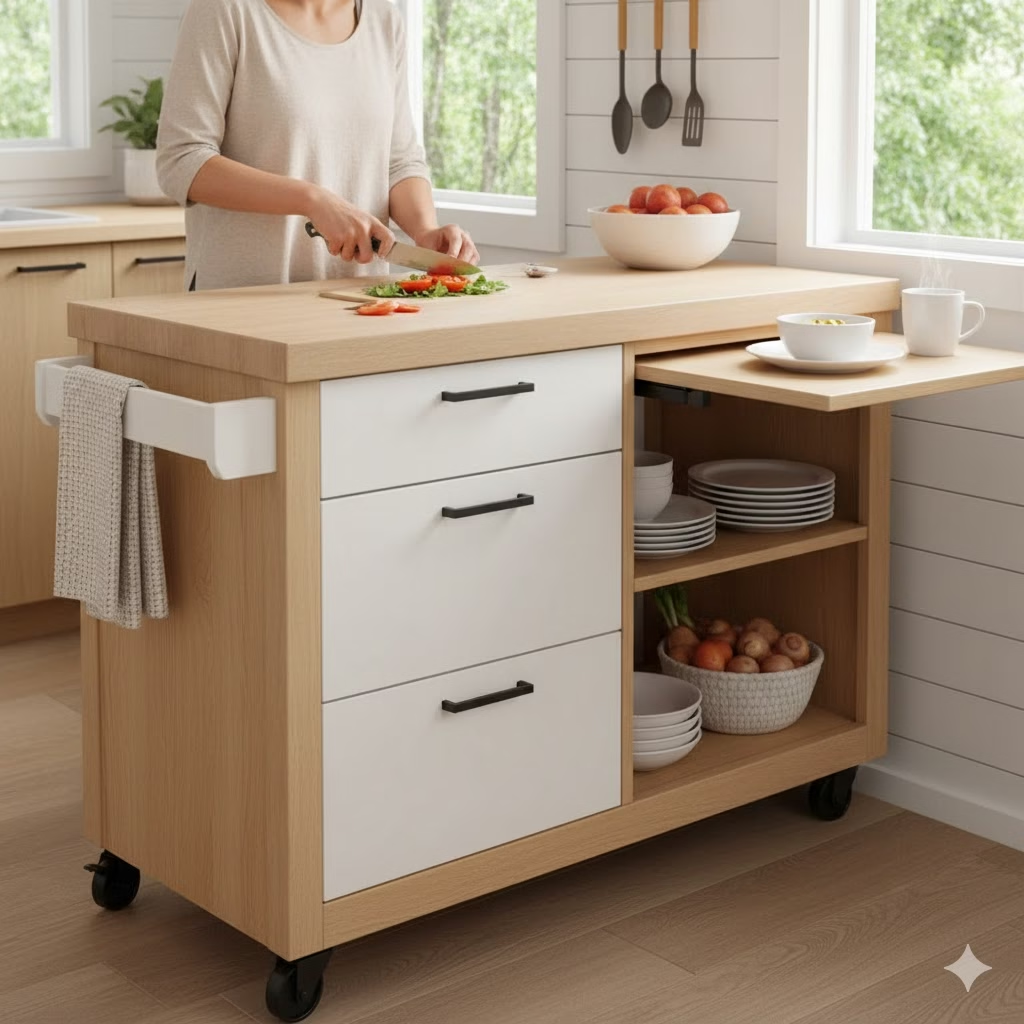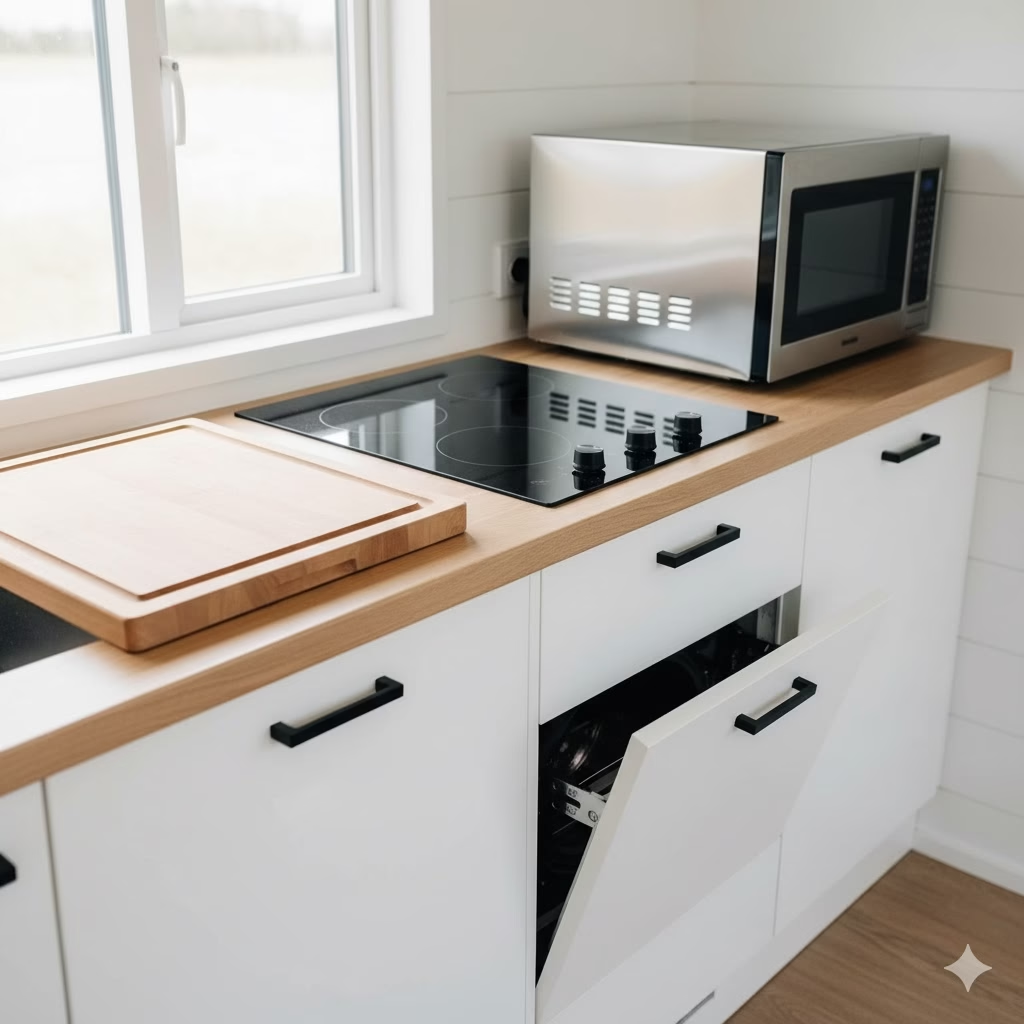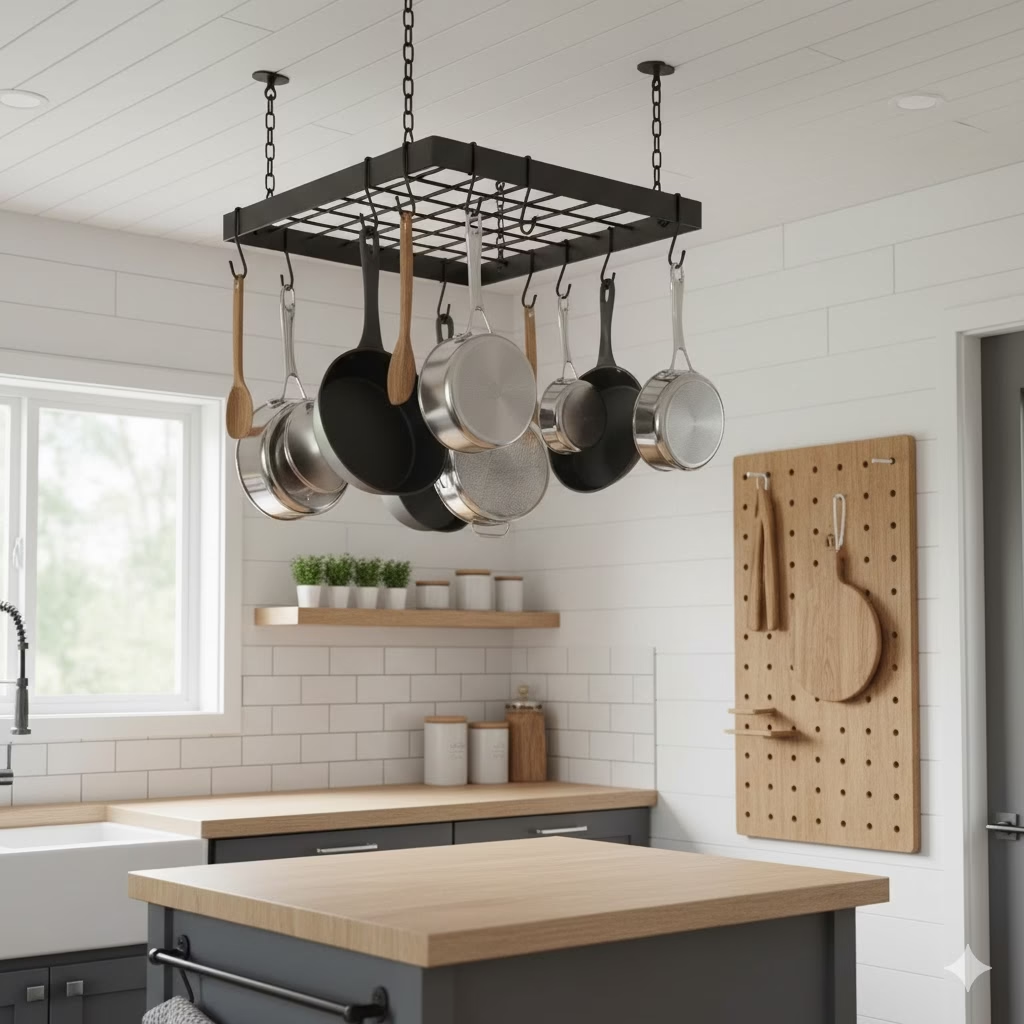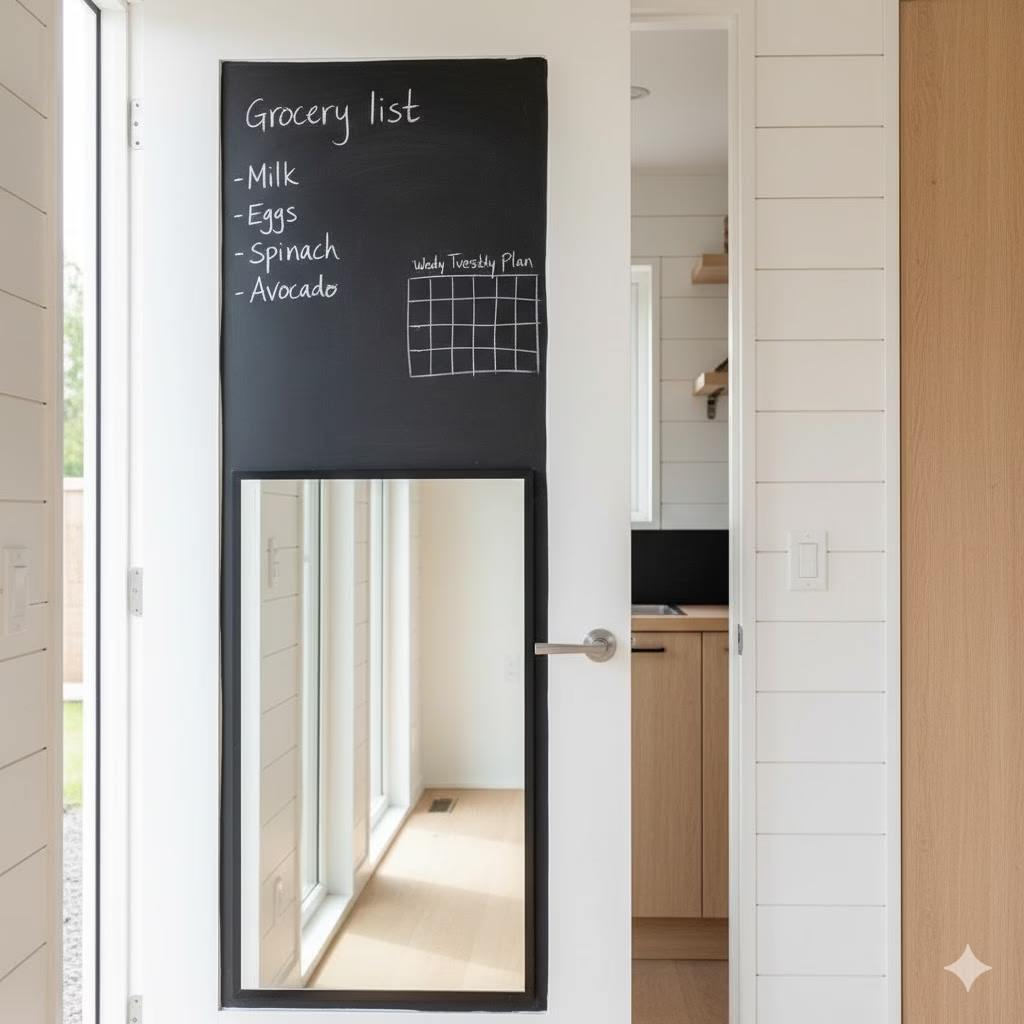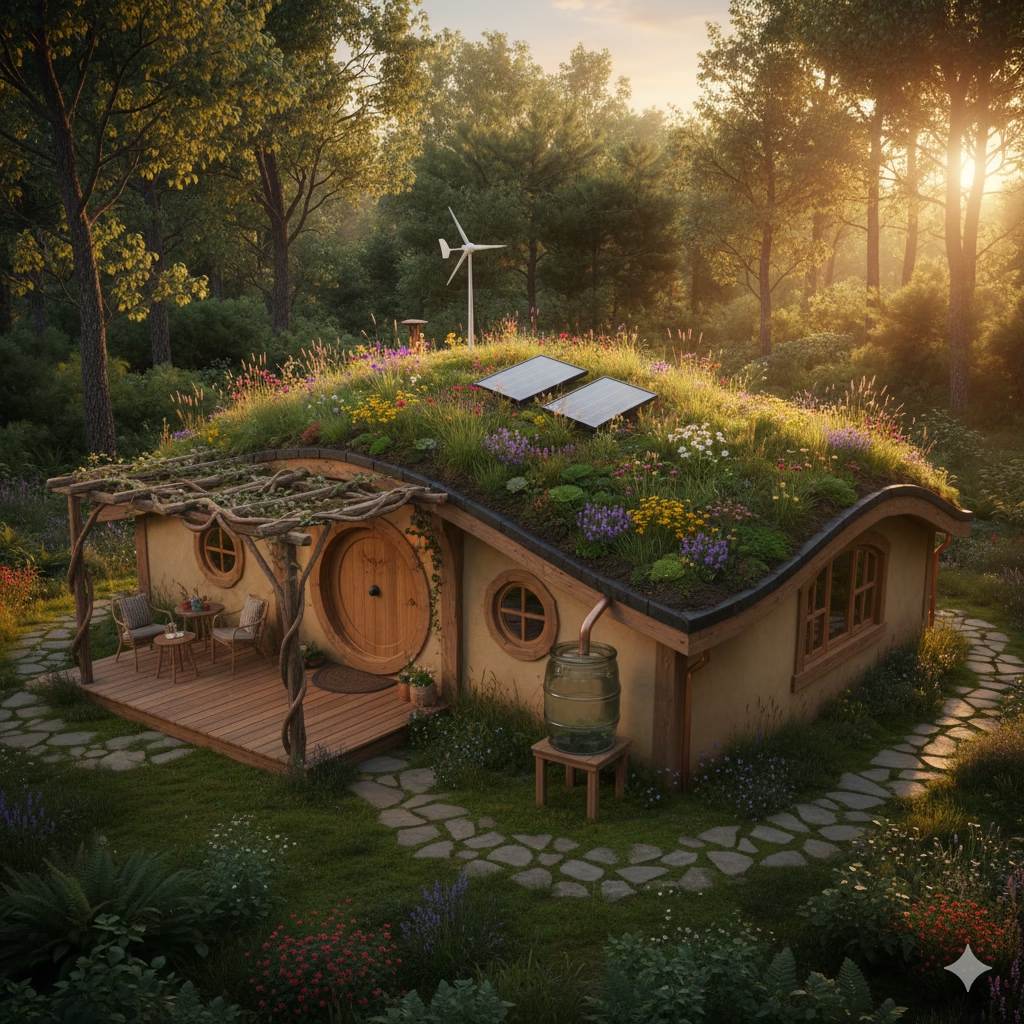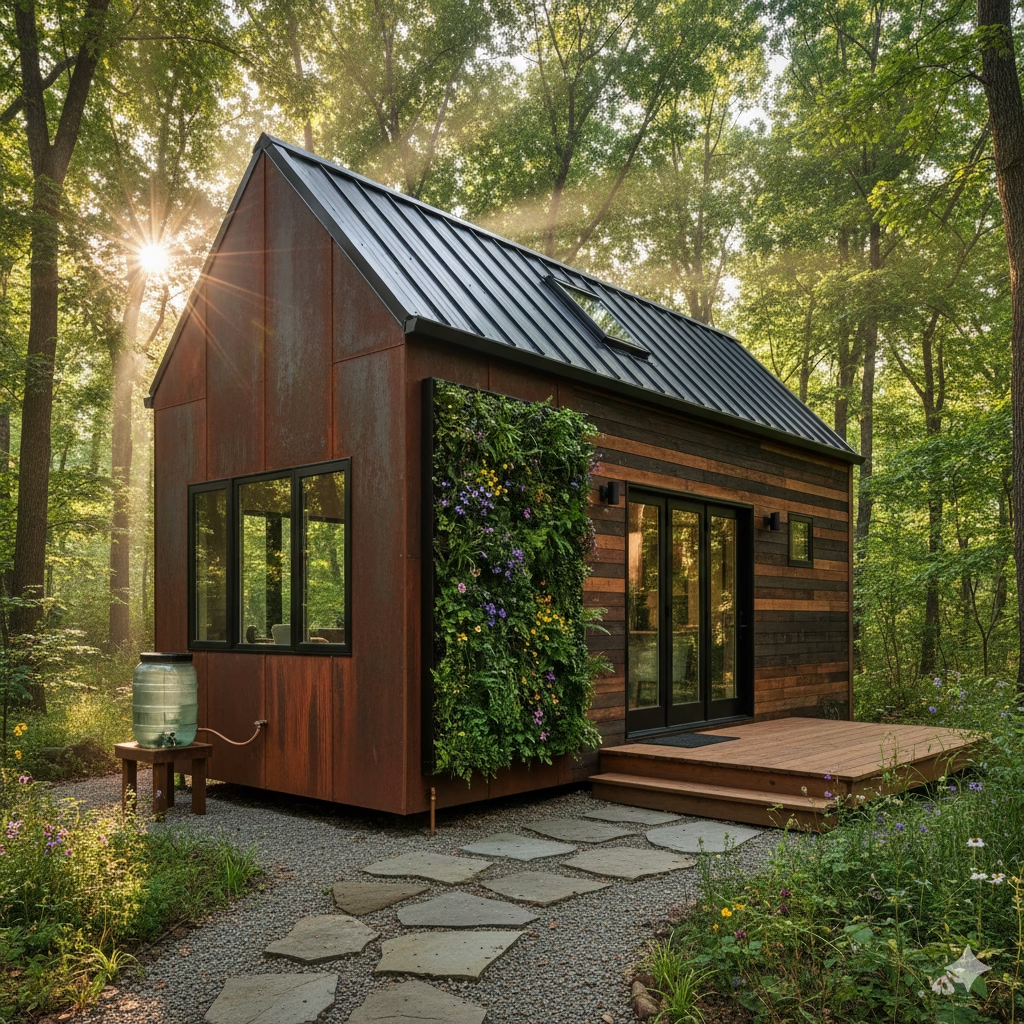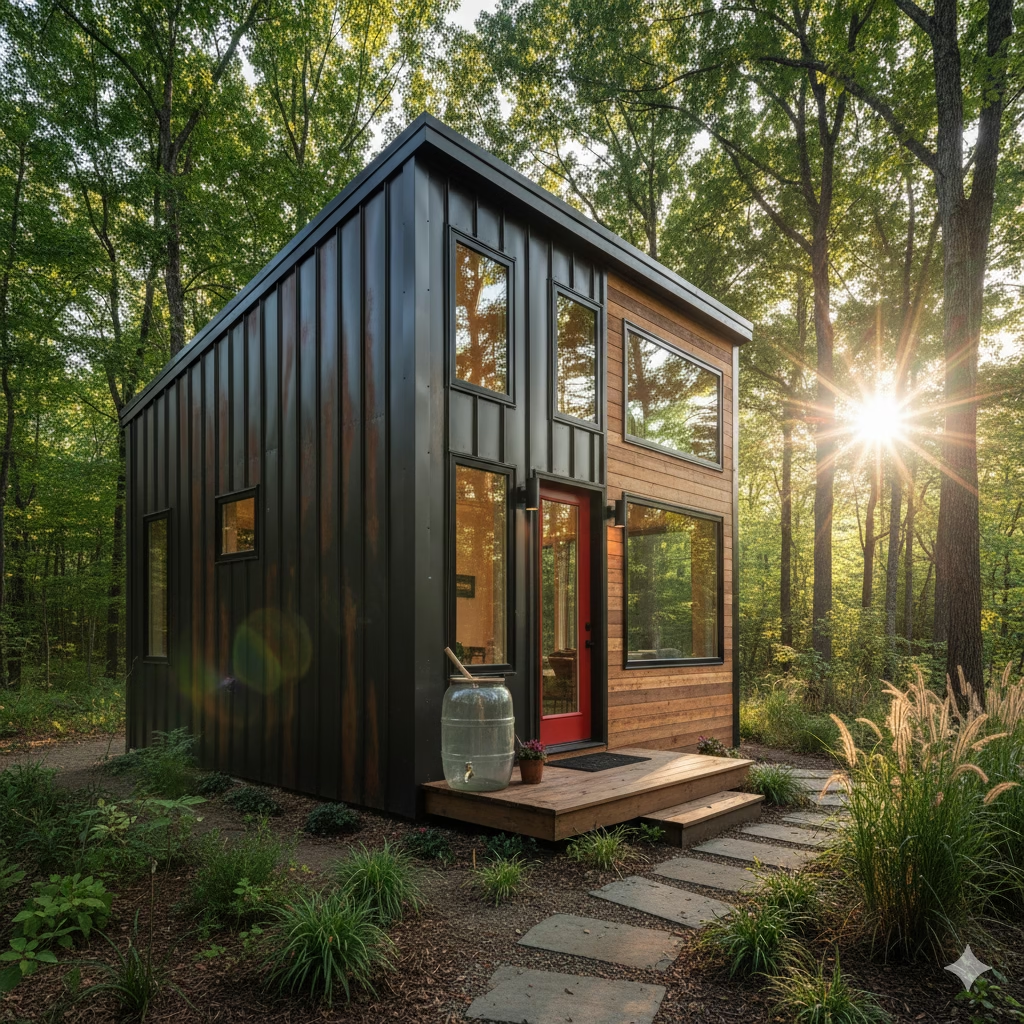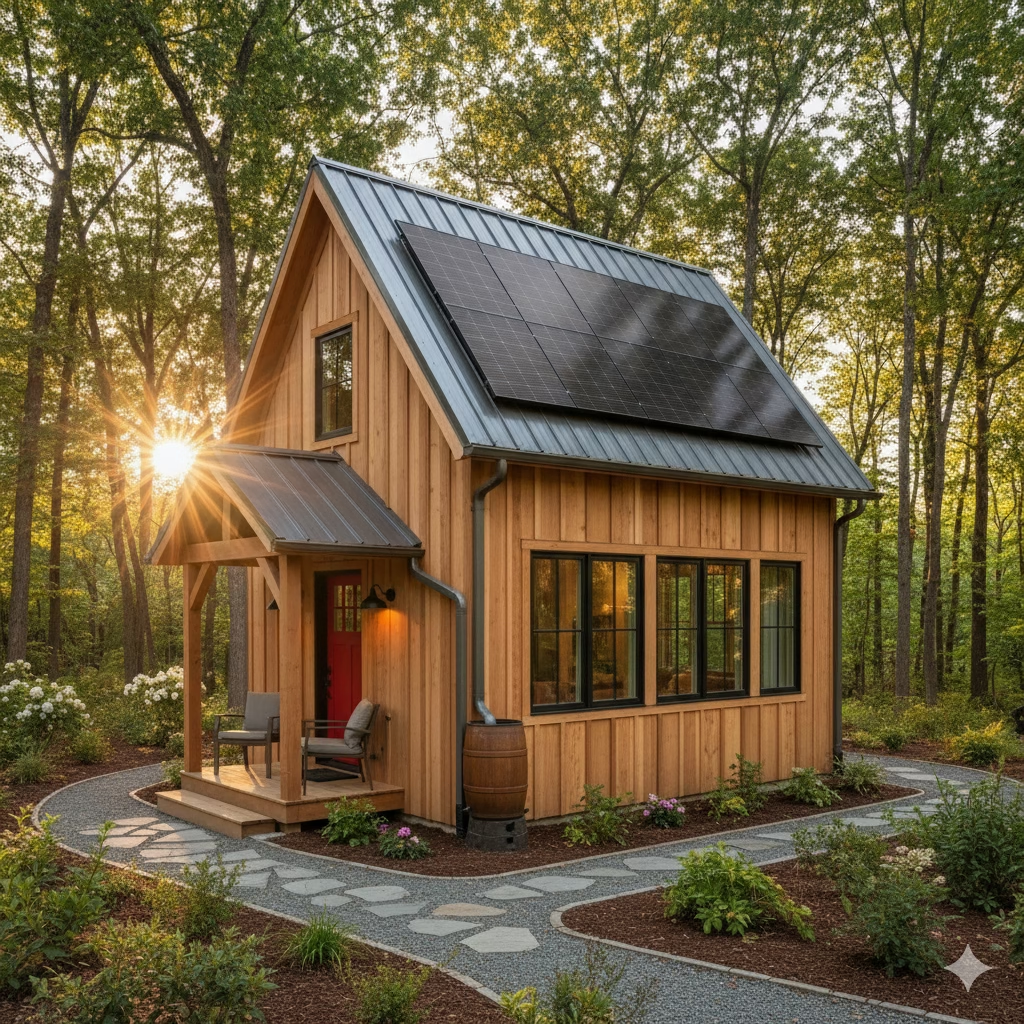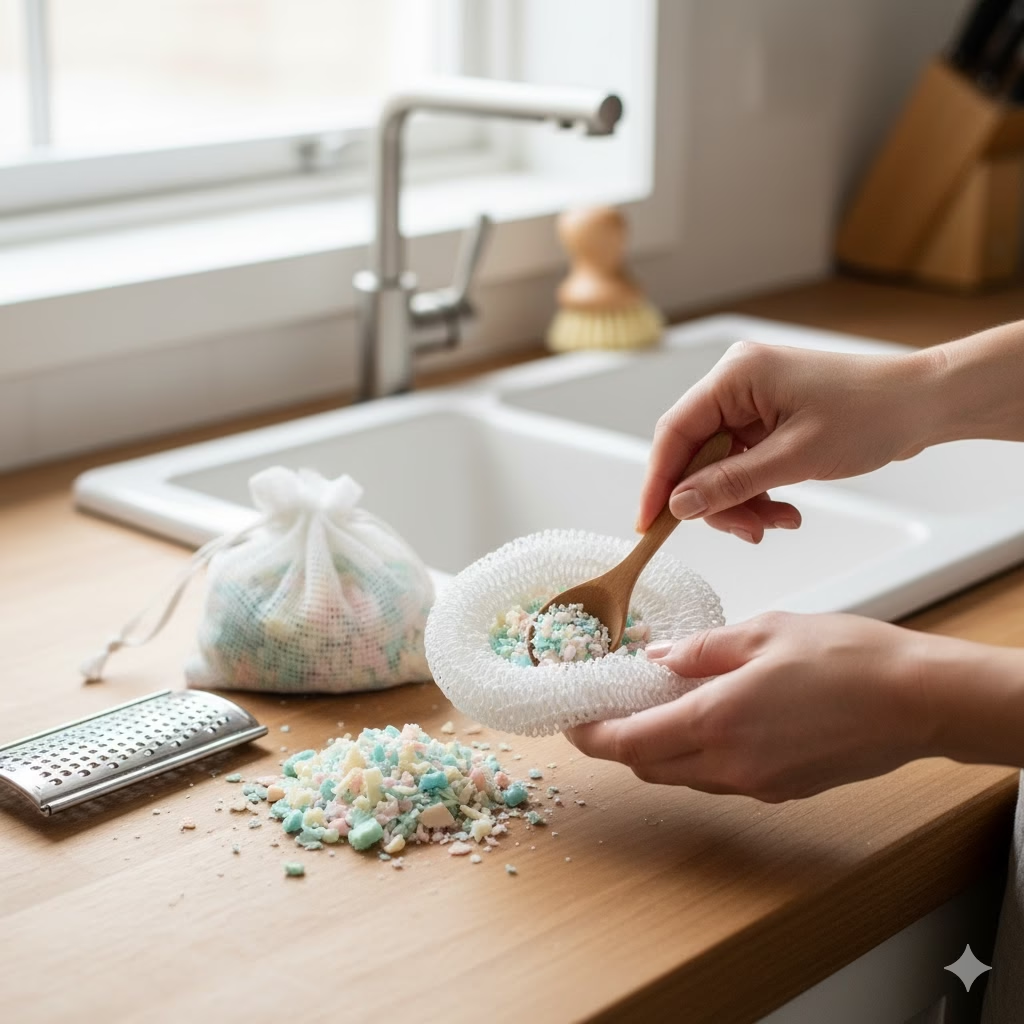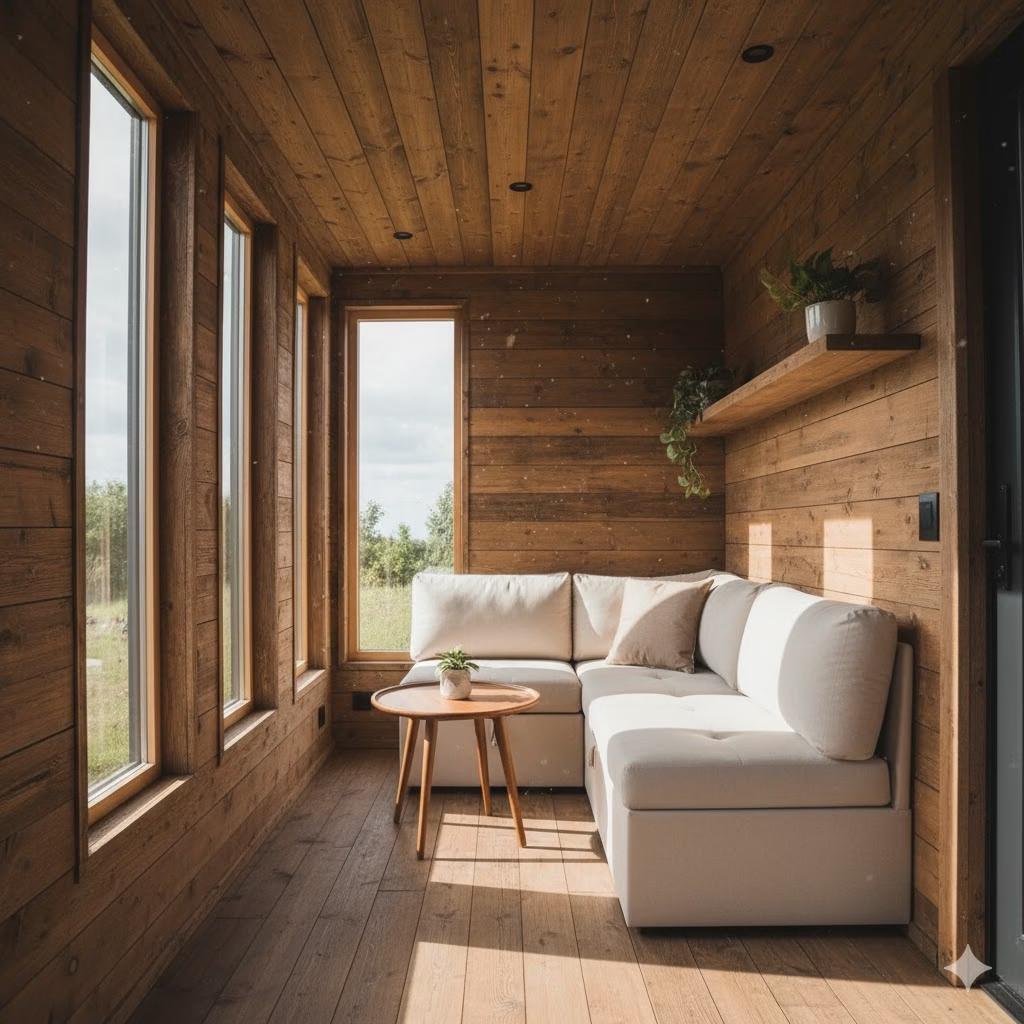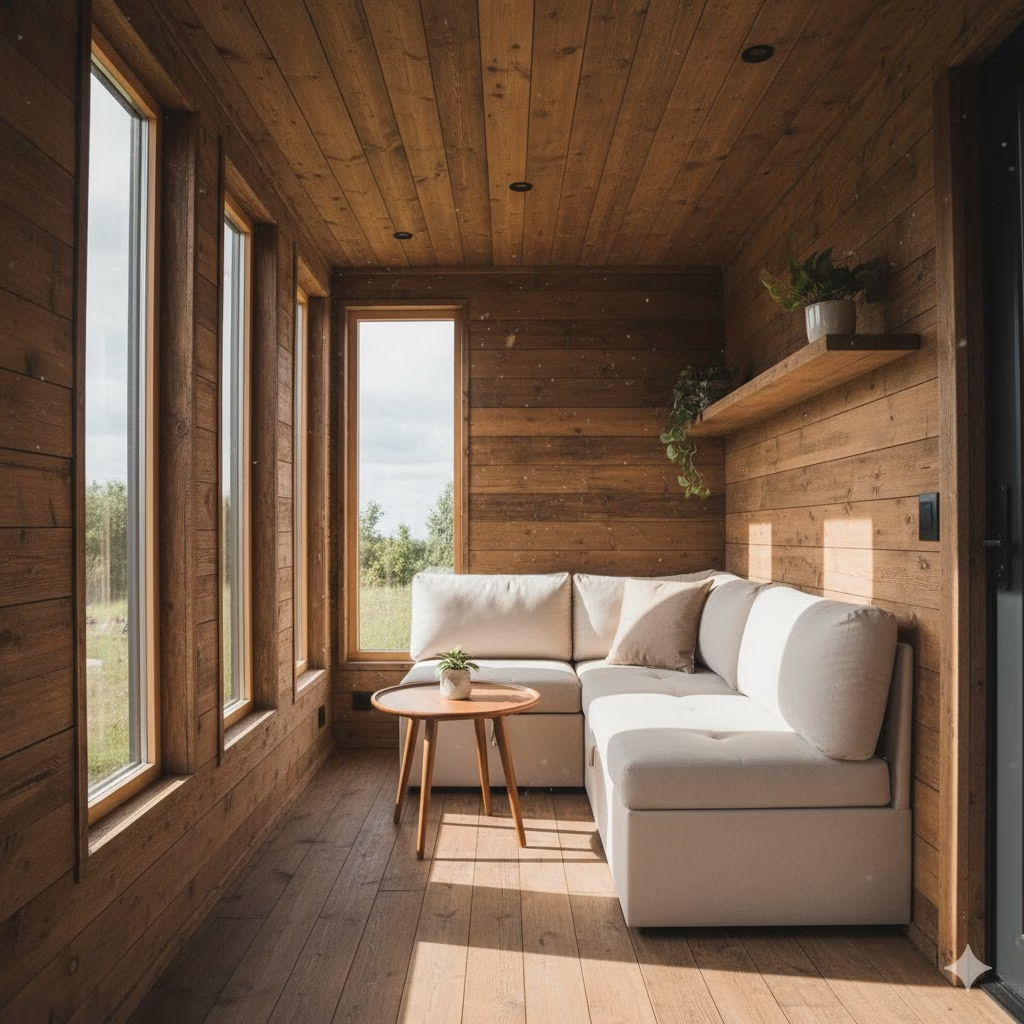
Ever feel like you need a simple way to stay healthy without eating boring food? I know I do! Juggling work, family, and life can make eating well feel tough. This article is for anyone who wants to give their Immune-Boosting systems a delicious edge, making healthy eating fun and easy. Let’s dig into the power of food to keep you feeling your best.
When we talk about staying healthy, the food we eat is our first line of defense. There’s no magic pill, but a bowl full of vitamins and antioxidants is the next best thing! That’s why we created The Ultimate Immune-Boosting Carrot Stew—a recipe that is both easy to make and packed with powerful, sickness-fighting ingredients.
This long article will show you exactly why this stew is so good for you, give you the step-by-step recipe, compare it to the rich Jamaican style, and answer all your questions. Get ready to cook up some serious health!
The Science Behind Your Bowl: Why This Stew is a Health Hero
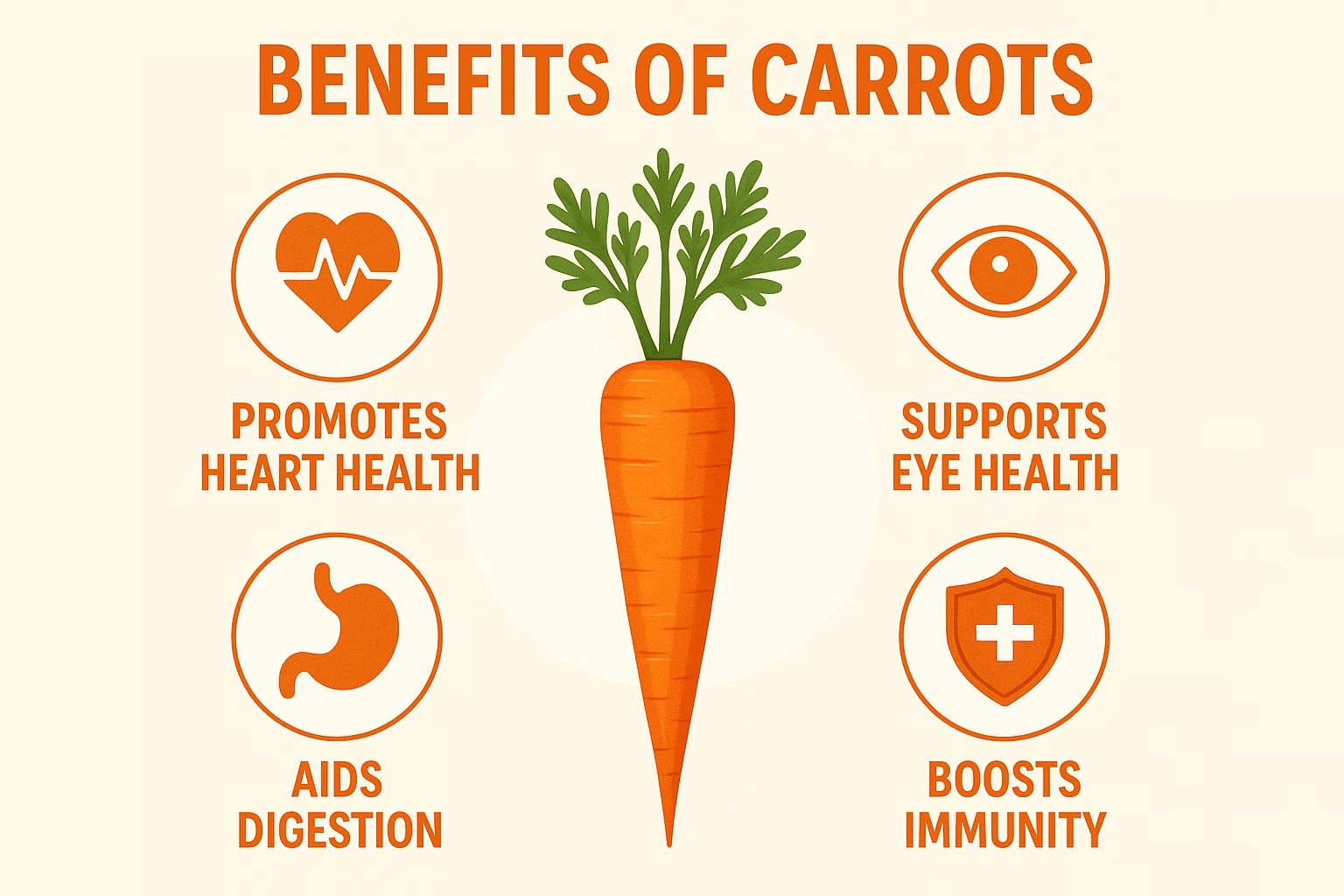
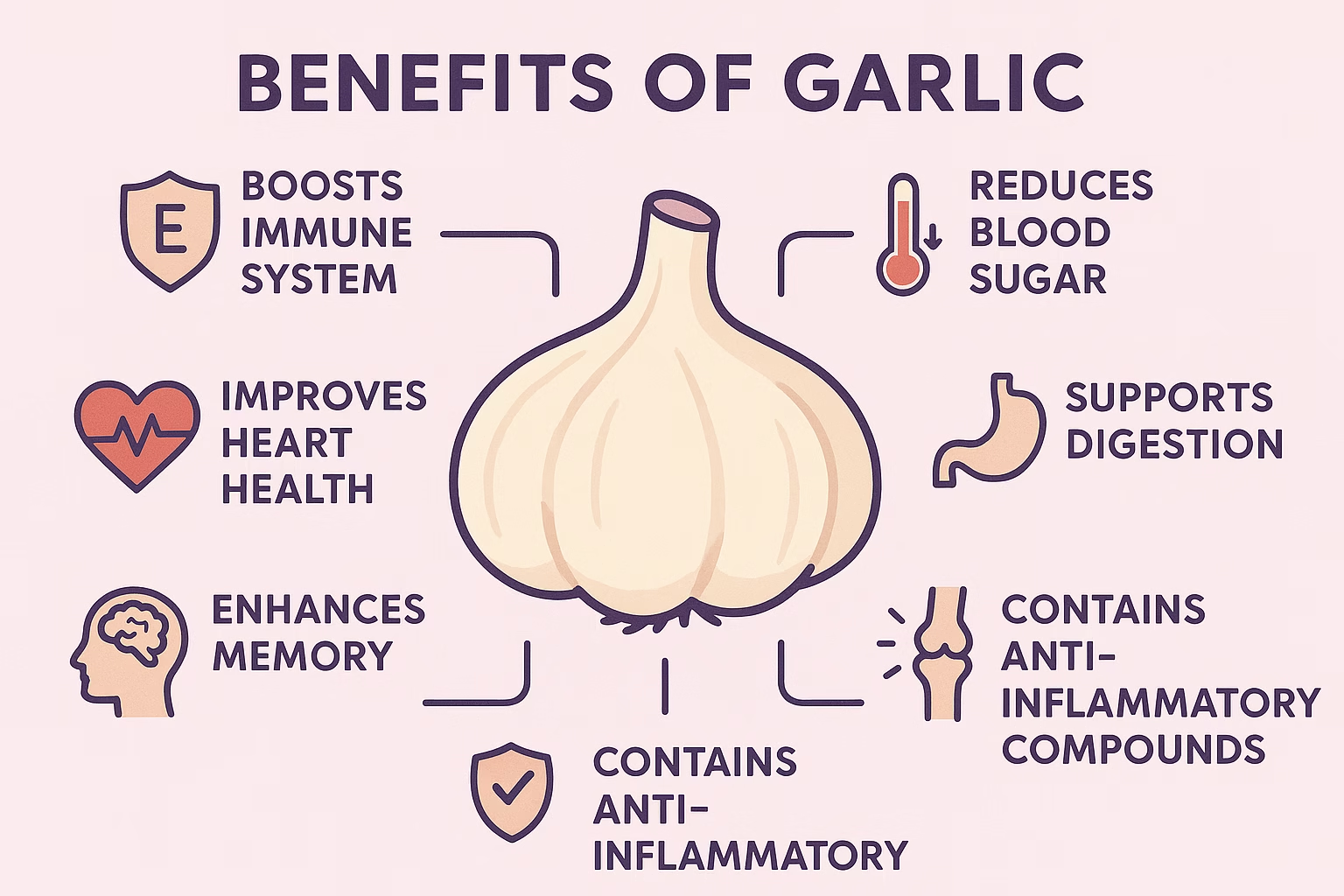
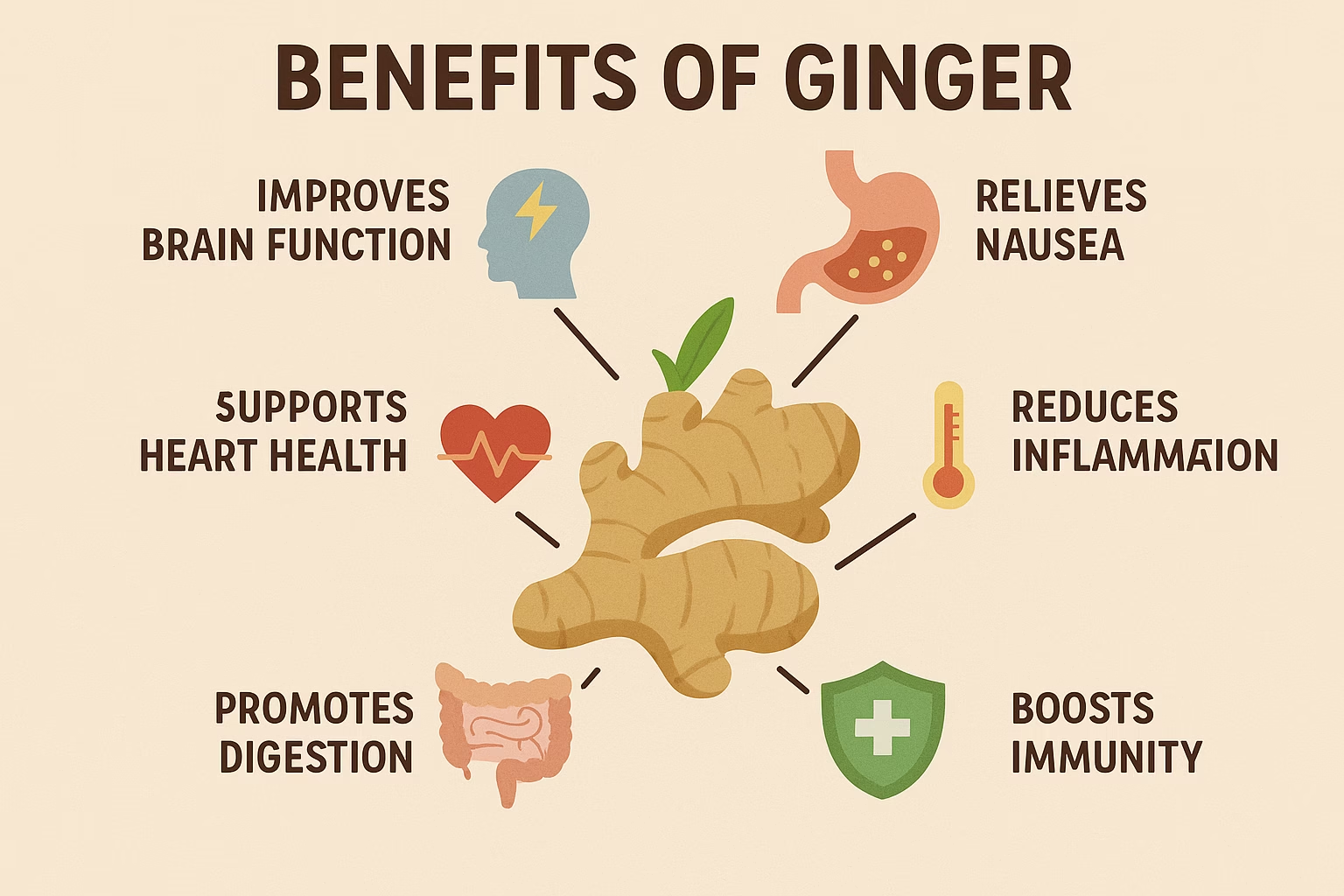
Every item in this stew works hard to keep your Immune-Boosting system strong.
Carrots: The Golden Foundation
Everyone knows carrots help your eyes, but they do much more! They are loaded with beta-carotene, which gives them their bright color. Your body changes beta-carotene into Vitamin A, which is vital for:
- Fighting Germs: Vitamin A helps keep the linings of your nose, throat, and stomach strong. These linings are the first things germs run into!
- Building Defenders: This vitamin helps your body make white blood cells, which are the immune system’s soldiers.
- Cleaning Up: Beta-carotene is a strong antioxidant that cleans up harmful stuff in your body called free radicals.
Tip: Cooking carrots with a bit of healthy oil (like the olive oil in the recipe) helps your body soak up more of that powerful beta-carotene.
Garlic & Ginger: The Flavorful Protectors
These two ingredients don’t just add a great taste; they are ancient remedies.
- Garlic: It has a special compound called allicin. This stuff is known for fighting viruses and bacteria. Eating garlic may help you avoid colds and the flu, or at least feel better faster.
- Ginger: It gives the stew a warm zing. Gingerols, the active part of ginger, are great at reducing swelling (inflammation) in your body. When there’s less swelling, your Immune-Boosting system can work better.
Turmeric & Pepper: The Dynamic Duo
Turmeric is the spice that makes curry yellow, but its real power comes from a compound called curcumin.
- Less Swelling: Curcumin is famous for being a powerful anti-inflammatory.
- Teamwork: You must use black pepper with turmeric! Pepper has piperine, which acts like a key, helping your body absorb curcumin much more easily.
Chickpeas & Greens: Fiber & Fillers
- Chickpeas: They add plant-based protein, which your body needs to build and fix immune cells. They are also packed with fiber.
- Gut Health: Over two-thirds of your immune system is in your gut! Fiber feeds the good bacteria in your stomach, and those bacteria keep your immune system happy and strong.
- Bell Peppers & Spinach: These veggies are loaded with Vitamin C. Vitamin C is an antioxidant that helps your white blood cells do their job well and protects them from damage.
The Ultimate Immune-Boosting Carrot Stew Recipe
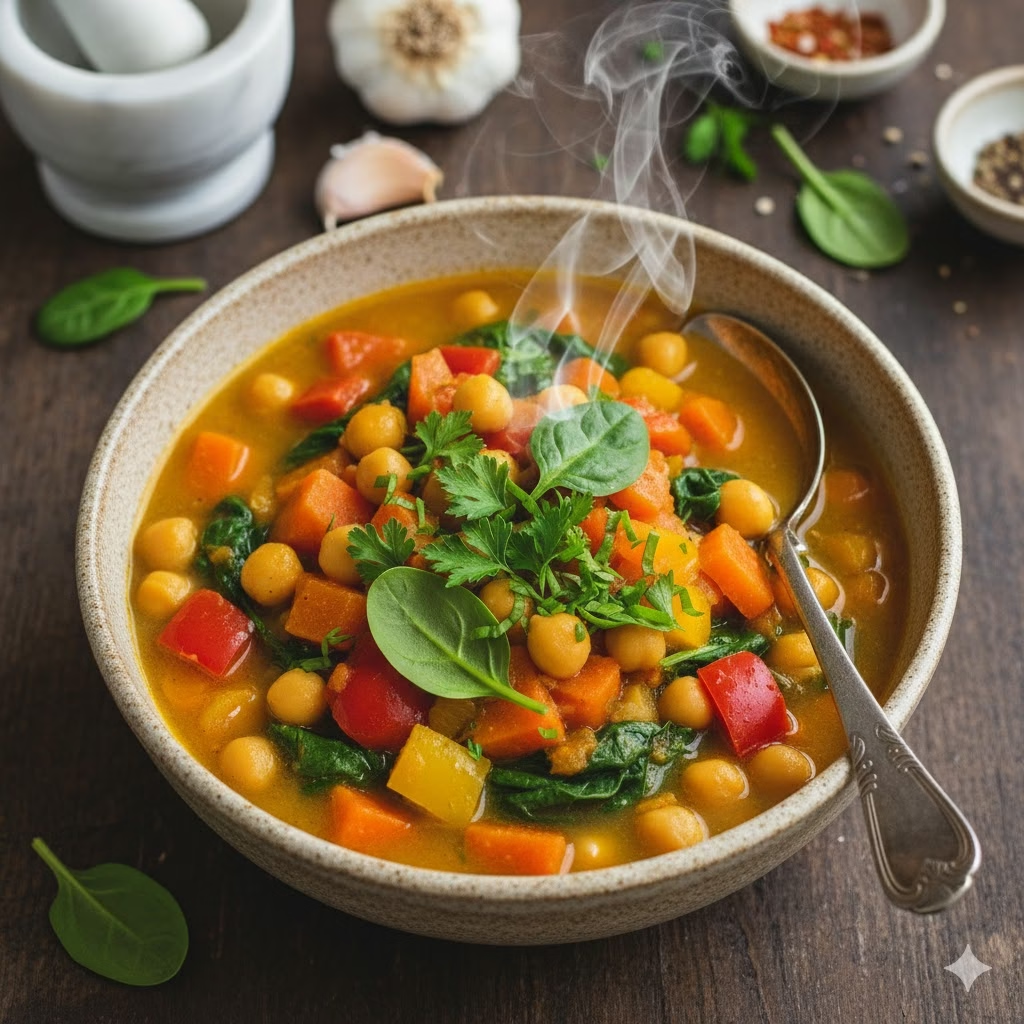
This recipe is simple, delicious, and built for immune-boosting power.
Prep time: 20 minutes
Cook time: 40 minutes
Yields: 6-8 servings
Essential Equipment
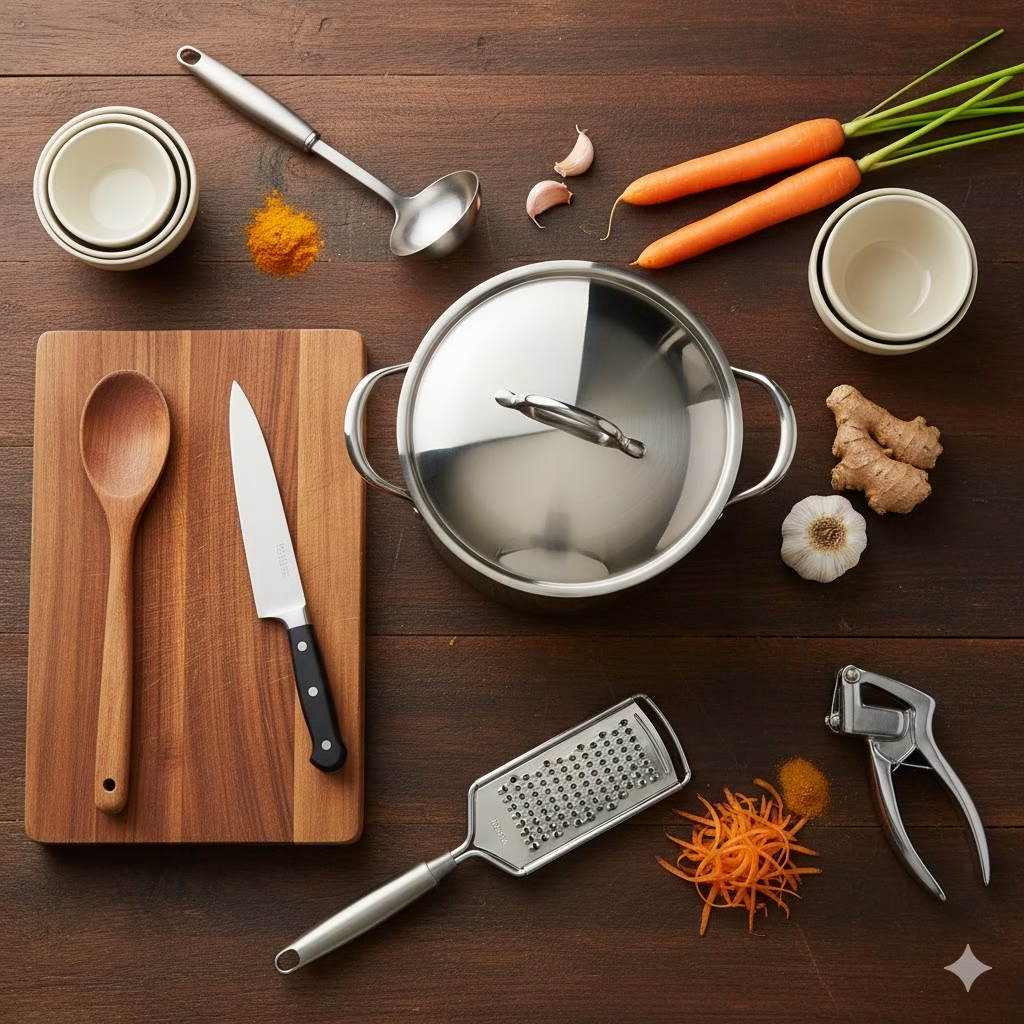
You don’t need fancy tools to make this nourishing stew, but having the right basic gear makes the process quick and easy.
- Large Pot or Dutch Oven: A 5-quart (or larger) heavy-bottomed pot is ideal. This gives you enough room to sauté your aromatics, add all the vegetables, and stir the stew without splashing.
- Cutting Board and Sharp Knife: Essential for safely and quickly prepping all the root vegetables, onions, and garlic.
- Vegetable Peeler: For peeling the carrots and sweet potatoes (unless you opt to leave the skin on for extra fiber).
- Box Grater or Microplane: Useful for grating the fresh ginger. If you don’t have one, finely mincing the ginger with a knife works well, too.
- Wooden Spoon or Spatula: For stirring the stew, especially when sautéing spices and making sure the bottom doesn’t stick.
- Can Opener and Colander: For easily preparing the crushed tomatoes and rinsing the chickpeas.
Ingredients:
- 2 tbsp olive oil (healthy fat)
- 1 large yellow onion, chopped
- 4 cloves garlic, minced
- 1 tbsp fresh ginger, grated
- 1 tsp ground turmeric
- 1/2 tsp ground cumin
- 1/2 tsp ground coriander
- 1/4 tsp black pepper (don’t skip this!)
- 6 medium carrots (about 1.5 lbs), chopped into rounds
- 2 celery stalks, chopped
- 1 red bell pepper, diced
- A yellow bell pepper, diced
- 1 (28-ounce) can crushed tomatoes
- 4 cups low-sodium vegetable broth
- 1 (15-ounce) can chickpeas, rinsed and drained
- 1 large sweet potato (about 1 lb), peeled and cubed
- 1/2 cup chopped fresh parsley, divided
- 4-5 cups fresh spinach or chopped kale
- Salt to taste
- Lemon wedges for serving (optional)
Instructions:

- Start the Flavors: Heat the olive oil in a large pot. Add the onion and cook until soft (5-7 minutes). Add the garlic and ginger and cook for just one minute until you can smell them well.
- Toast the Spices: Stir in the turmeric, cumin, coriander, and black pepper. Cook for 30 seconds. This step wakes up the flavor of the spices.
- Add the Core: Put in the carrots, celery, bell peppers, crushed tomatoes, vegetable broth, chickpeas, and sweet potato. Stir everything so it’s mixed well.
- Simmer Time: Bring the stew to a gentle boil, then turn the heat down low. Cover the pot and cook for 25-30 minutes, or until the carrots and sweet potatoes are soft enough to poke with a fork.
- Finish Strong: Stir in half of the fresh parsley and all the spinach (or kale). Cook until the greens are just wilted (about 2-3 minutes). Taste and add salt as needed.
- Serve: Scoop the stew into bowls. Sprinkle the rest of the parsley on top. A squeeze of fresh lemon juice at the end gives it a great, bright taste!
Variation: Creamy & Spicy Jamaican Carrot Stew (Ital Style)
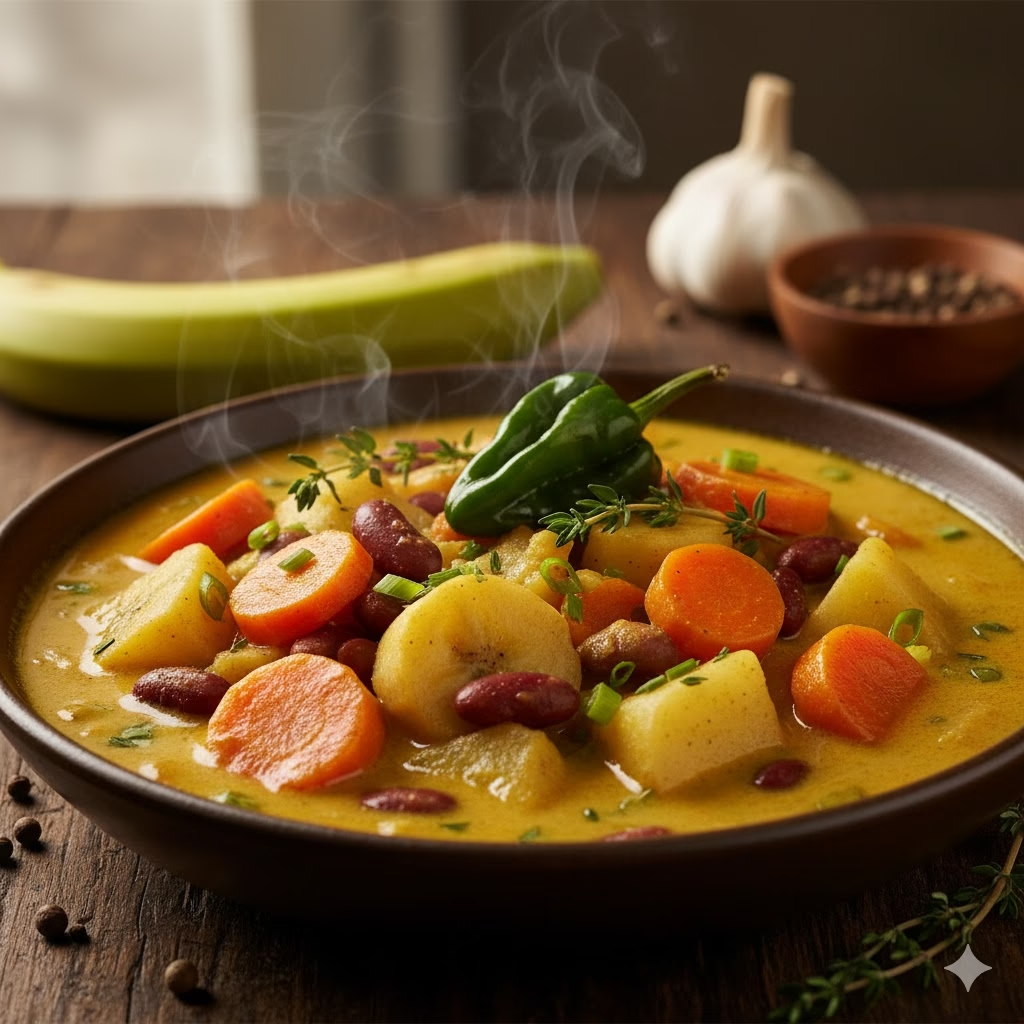
If you love a rich, spicy flavor and a creamy texture, try the Jamaican version! This is often called an “Ital” stew because it follows a natural, vegan tradition from Jamaica. It’s packed with nutrients but offers a different flavor profile.
Prep time: 25 minutes
Cook time: 50-60 minutes
Yields: 6-8 servings
Ingredients:

- 2 tbsp coconut oil
- 1 large yellow onion, chopped
- 4 cloves garlic, minced
- 1 tbsp fresh ginger, grated
- 1 tsp dried thyme
- 1/2 tsp ground allspice (pimento)
- 1 whole Scotch Bonnet pepper (add whole for flavor, but don’t cut it!)
- 6 medium carrots, chopped into rounds
- 1 large sweet potato, peeled and cubed
- 1 green plantain, peeled and sliced
- A medium Irish potato (white potato), peeled and cubed
- 1 (15-ounce) can kidney beans, rinsed and drained
- 1 (13.5-ounce) can full-fat coconut milk
- 3 cups vegetable broth
- 1/2 cup chopped fresh scallions
- Salt to taste
- Small flour dumplings (optional)
Instructions:

- Aromatic Base: Heat coconut oil. Cook onion, then add garlic and ginger for a minute.
- Spice it Up: Stir in thyme, allspice, and a whole Scotch Bonnet pepper. Cook for 30 seconds.
- Add the Roots: Add carrots, both potatoes, plantain, and kidney beans.
- Get Creamy: Pour in the coconut milk and broth. Bring to a boil, then turn the heat low, cover, and simmer for 40-50 minutes until all the roots are tender. (If you want to add flour dumplings, do it during the last 20 minutes.)
- Serve: Take out the Scotch Bonnet pepper (be careful not to break it!). Stir in the scallions and add salt.
Comparison: Which Stew is Best for Immune-Boosting?

Both stews are good for you, but they help your body in different ways!
| Feature | The Ultimate Immune-Boosting Stew | Creamy & Spicy Jamaican Stew |
| Main Health Focus | Low-fat, high in Vitamin C, anti-inflammatory (Turmeric). Great for gut and cellular health. | High in diverse root vegetable nutrients, rich in healthy fats (coconut). Great for sustained energy. |
| Main Flavor | Earthy and warm (Cumin, Turmeric, Ginger). | Rich, creamy, and spicy (Allspice, Coconut, Scotch Bonnet). |
| Main Liquid | Broth and Tomatoes (very light). | Coconut Milk (very creamy, higher fat). |
| Starches | Sweet Potato and Chickpeas. | Sweet Potato, Irish Potato, Plantain, and Kidney Beans. |
The Bottom Line: If your goal is a very light, low-fat meal built around maximum antioxidant power, choose The Ultimate Immune-Boosting Stew. If you need a heartier, richer meal with lots of complex starches and a taste of the Caribbean, go for the Jamaican Stew.
How To Make It a Complete Immune-Boosting Meal
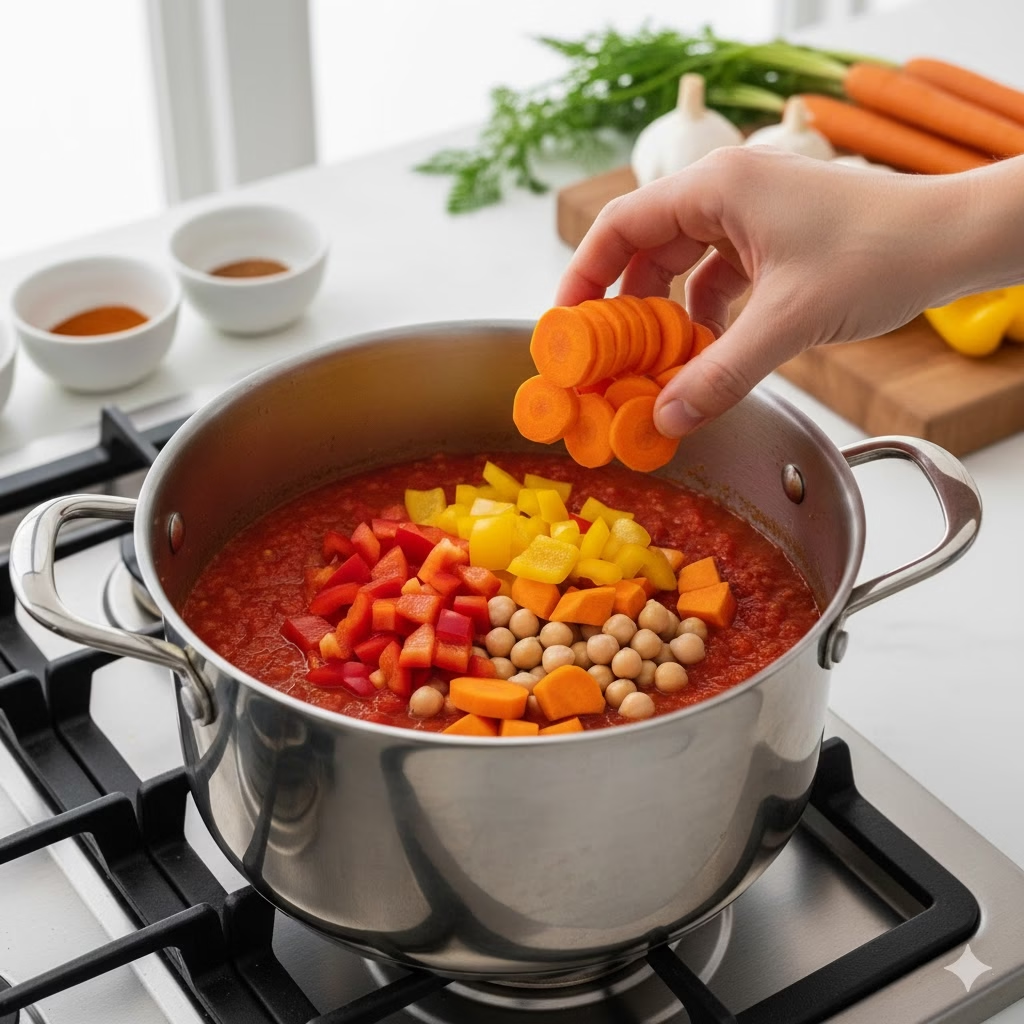
You can make your healthy stew even better by adding the right sides!
- Whole Grains: Serve the stew over brown rice or quinoa. These grains give you lasting energy and extra fiber, which is a great boost for your immune system’s home base (your gut!).
- Healthy Fats: When serving, put a swirl of extra olive oil or a sprinkle of pumpkin seeds on top. These healthy fats help your body soak up the fat-soluble vitamins (A, D, E, K) that are packed in the carrots and sweet potatoes.
- Good Bacteria: Try serving the stew with a small side of fermented foods like sauerkraut or kimchi. These foods are full of probiotics (good bacteria) that work with the fiber in your stew to keep your gut—and your immune system—in great shape.
Kitchen Tricks to Maximize Nutrition and Increase Immune-Boosting
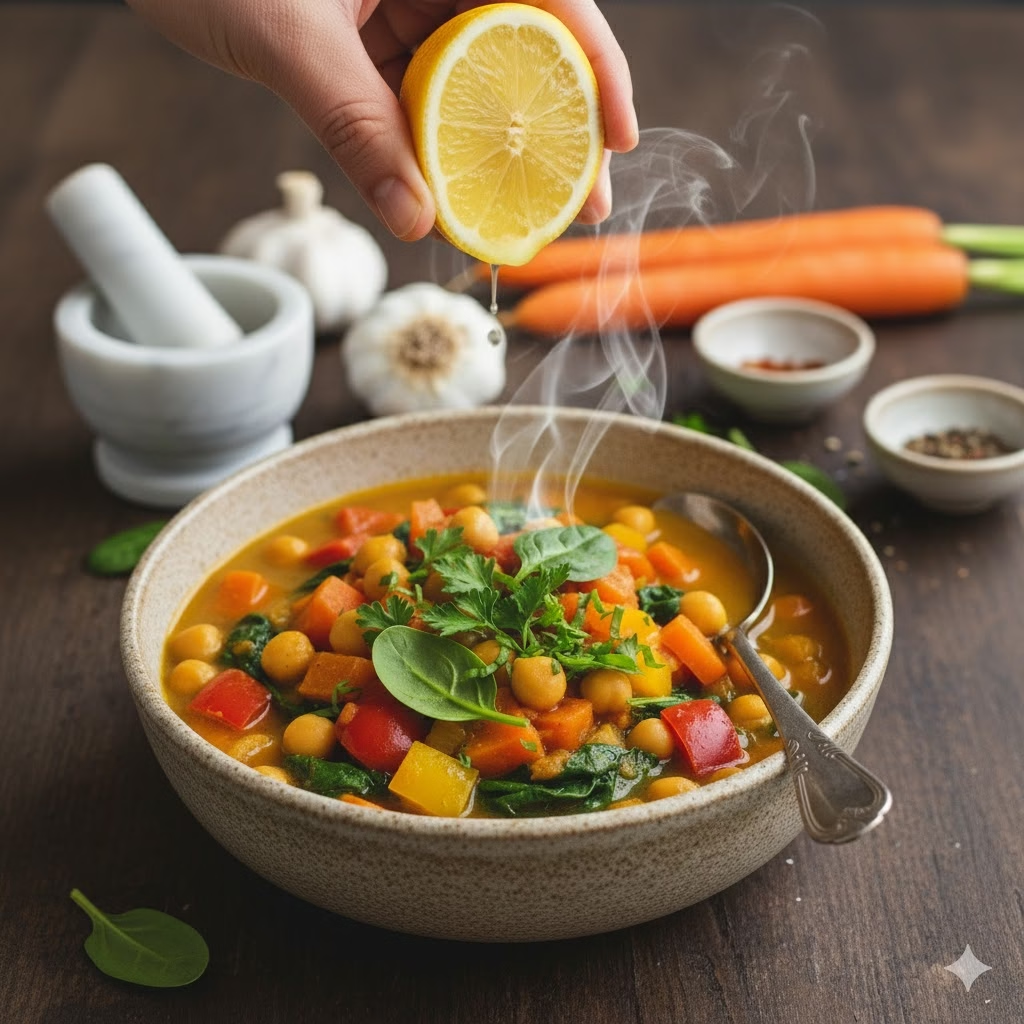
Here are some pro tips to make sure you get the most out of every spoonful:
- Wake Up the Garlic: After you chop the garlic, let it sit on the cutting board for 5 to 10 minutes before adding it to the pot. This simple wait time lets the full amount of fighting power (allicin) develop!
- Use Every Drop: When cooking vegetables, many vitamins (like Vitamin C) escape into the water. If you steam any veggies before the stew, use that liquid as part of your broth. Don’t let those vitamins go down the drain!
- Keep the Peel: If your carrots and sweet potatoes are well-washed, leave the peel on! The peel is where a lot of the fiber and antioxidants hide.
Frequently Asked Questions (FAQ)
Q1: Can I make this stew in a slow cooker or instant pot?
A: Yes! This stew works great in both.
- Slow Cooker: Sauté your onions, garlic, and spices on the stove first for the best flavor. Then, dump everything else into the slow cooker. Cook on low for 6-8 hours or high for 3-4 hours.
- Instant Pot: Use the Sauté button for your onions and spices. Add the rest of the ingredients, secure the lid, and pressure cook on high for 5 minutes. Let it naturally release pressure for 10 minutes before opening.
Q2: What can I use instead of fresh parsley?
A: If you don’t like parsley, you can use fresh dill or chives. They still add a nice, fresh flavor and give you a dose of extra antioxidants.
Q3: How long does this stew last?
A: The stew is excellent for making ahead! It keeps in the refrigerator for 4 to 5 days. You can also freeze it for up to 3 months. Just make sure it cools completely before you put it in a freezer-safe container.
Q4: Is the Jamaican stew (Ital) always vegan?
A: Yes, traditionally! “Ital” food in Jamaica is based on a natural, plant-based diet. While some modern “Jamaican stews” might include meat, an authentic Ital stew is always free of meat and processed foods.
Q5: Can I substitute the carrots for a different root vegetable?
A: Sure! You can use parsnips or a mix of butternut squash with your sweet potatoes. These all have similar nutrients and will absorb the powerful spice blend beautifully.
References
- WHO – Vitamin A supplementation
- Healthline – Ginger Health Benefits: Digestion, Nausea, and More
- Medicalnewstoday – Garlic: Health benefits and uses
- Clevelandclinic – What You Should Know About Your Gut Health
Recent Posts




